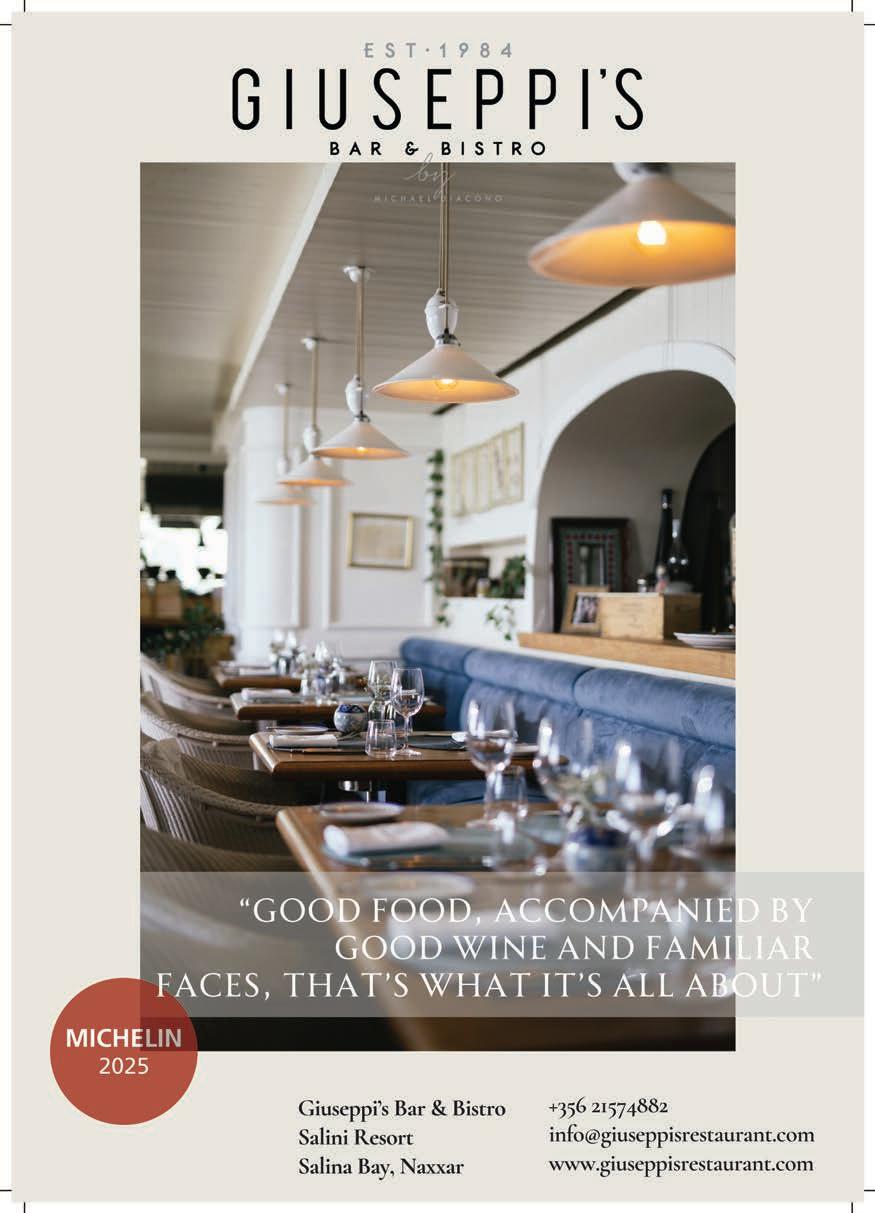365 OCTOBER 2025
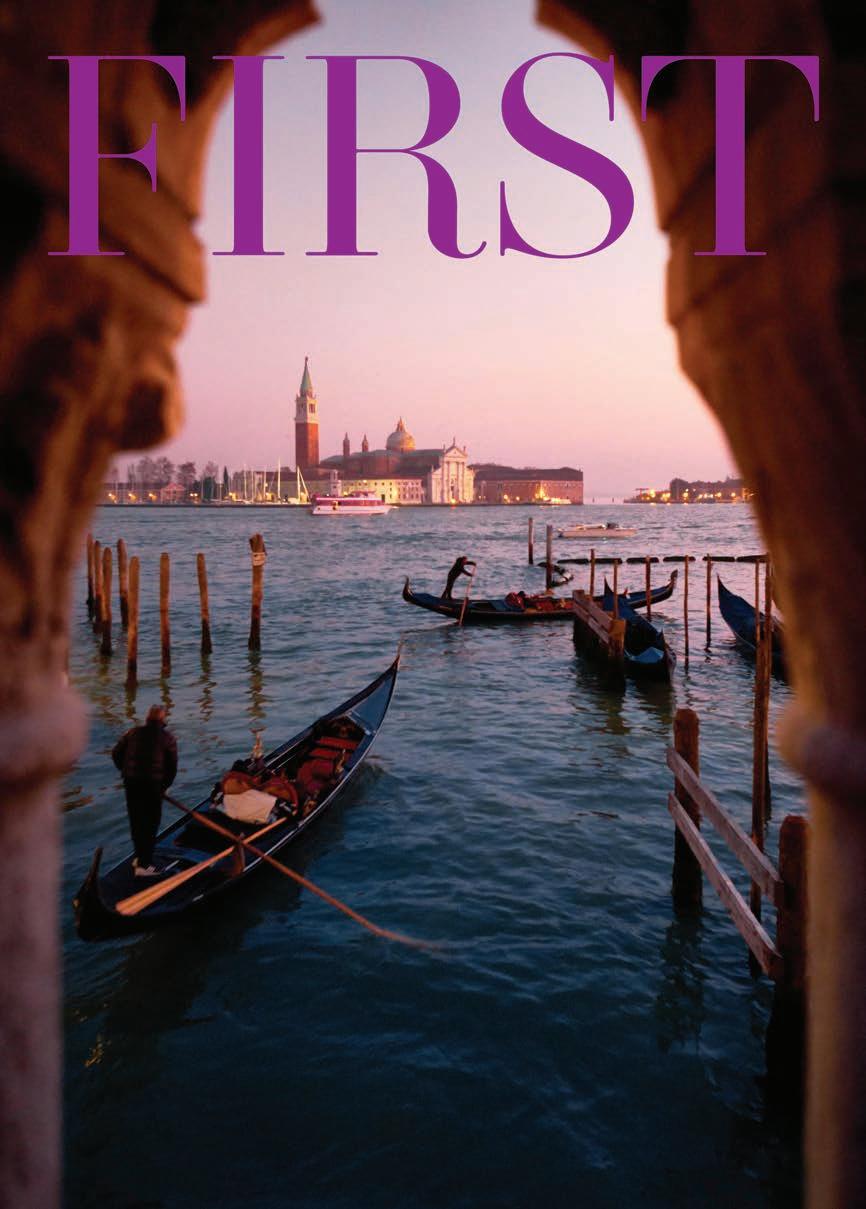

365 OCTOBER 2025


“Throw your dreams into space like a kite, and you do not know what it will bring back, a new life, a new friend, a new love, a new country.”
ANAÏS NIN



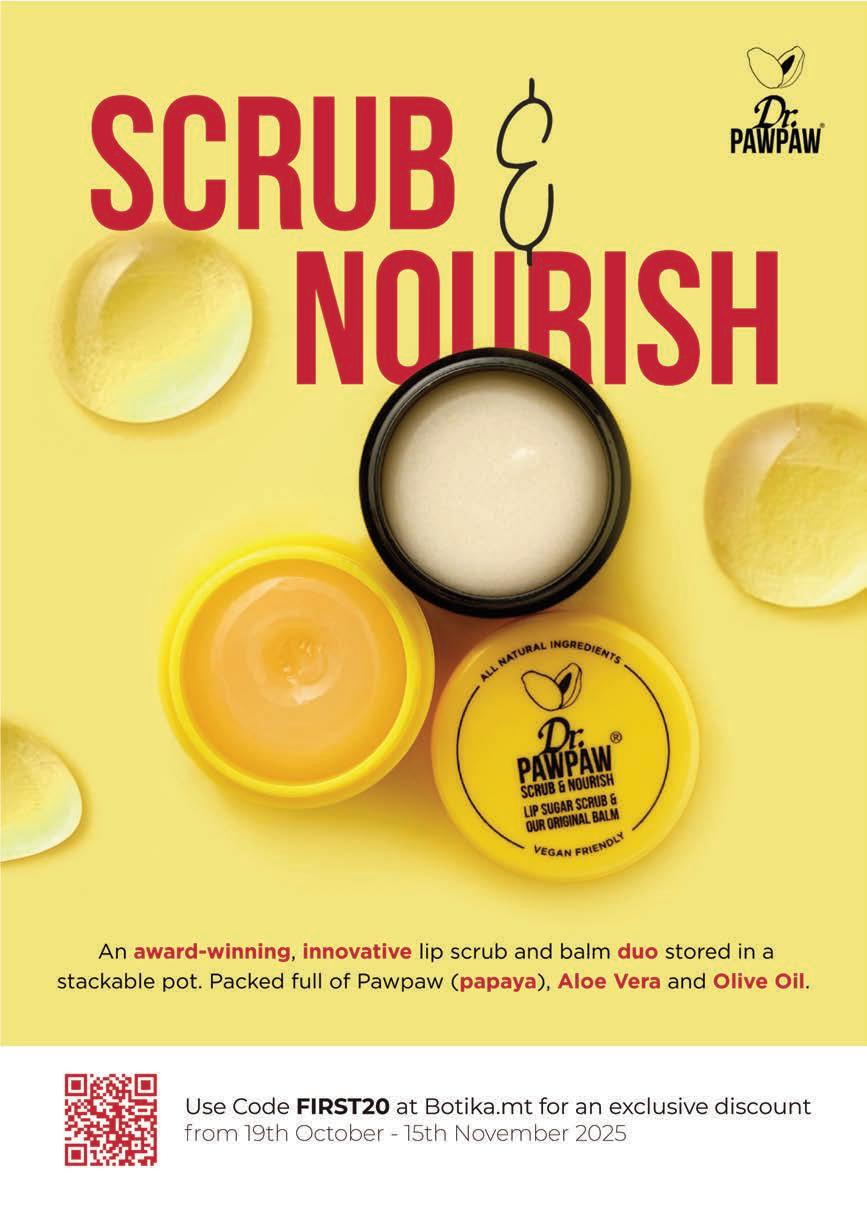
“WE

he artist is the only one who knows that the world is a subjective creation, that there is a choice to be made, a selection of elements. It is a materialization, an incarnation of his inner world. Then he hopes to attract others into it. He hopes to impose his particular vision and share it with others. And when the second stage is not reached, the brave artist continues nevertheless. The few moments of communion with the world are worth the pain, for it is a world for others, an inheritance for others, a gift to others, in the end. When you make a world tolerable for yourself, you make a world tolerable for others.”
ANAÏS NIN



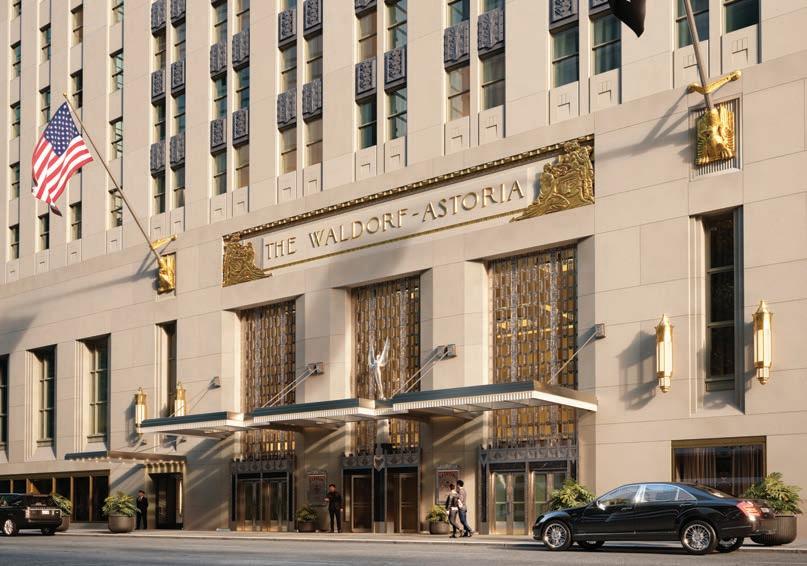
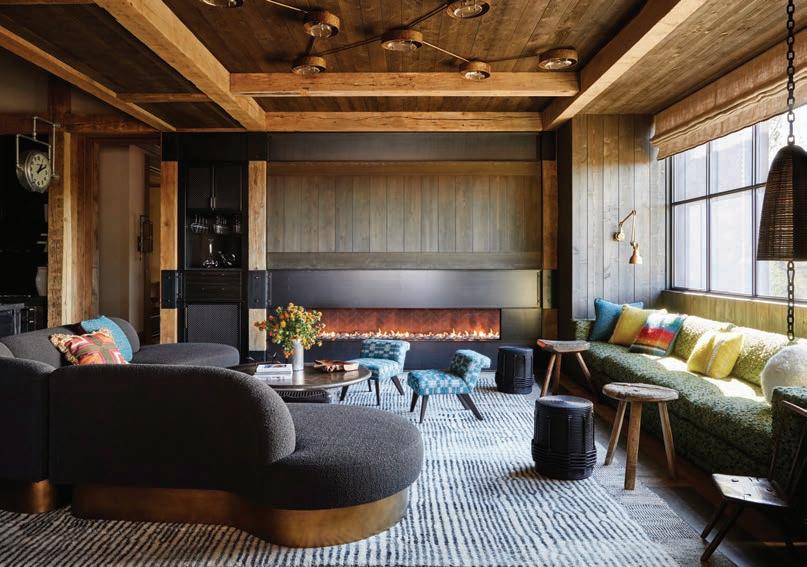
10
LA DOLCE VITA
The Return of an Icon. Waldorf Astoria New York.
21 INTERIORS
California Interiors. Interior Designer Sheldon Harte.
33 ART
Pippa Toledo’s Painted Vision. Freedom of Colour
42 FRAGRANCE
A PHILOSOPHY OF SCENT. PART 14.
Image and Likeness. A look at CHANEL BOIS DES ILES LES EXCLUSIFS DE CHANEL EDP.
46 STYLE
The Universe of CHANEL. Matthieu Blazy’s Vision.
55
ARCHITECTURE
PREMJU EMANUELE LUIGI GALIZIA 2025.
57
Emanuele Luigi Galizia. Architect of a Nation in Transition.
67
Premju Galizia 2025 Finalists.
77 GASTRONOMY
Vania Ghedini’s Venice. Seasonal Alchemy at Oro, Cipriani.
88 TRIBUTE
Jane Goodall (1934-2025). The Gentle Disrupter.
90 THIS IS WINE
Chateau Figeac 2016.


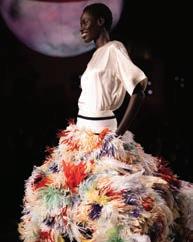
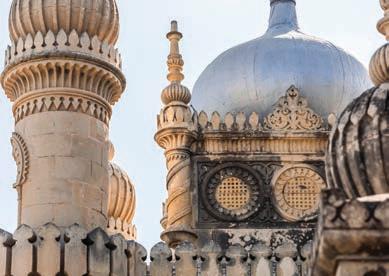
ARCHITECTURE
Emanuele Luigi Galizia. Architect of a Nation in Transition. Turkish Cemetery, Marsa.Photo Jean Marc Zerafa for Kamra tal-Periti. FRAGRANCE. A PHILOSOPHY
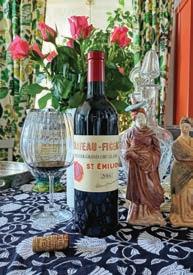
Reborn after an eight-year restoration, the Waldorf Astoria New York reawakens the glamour of the Jazz Age. Once the heartbeat of Manhattan society, its Art Deco splendour returns with renewed brilliance, where echoes of Ella Fitzgerald and glittering soirées meet contemporary sophistication on Park Avenue once again.
Photography courtesy Waldorf Astoria New York.
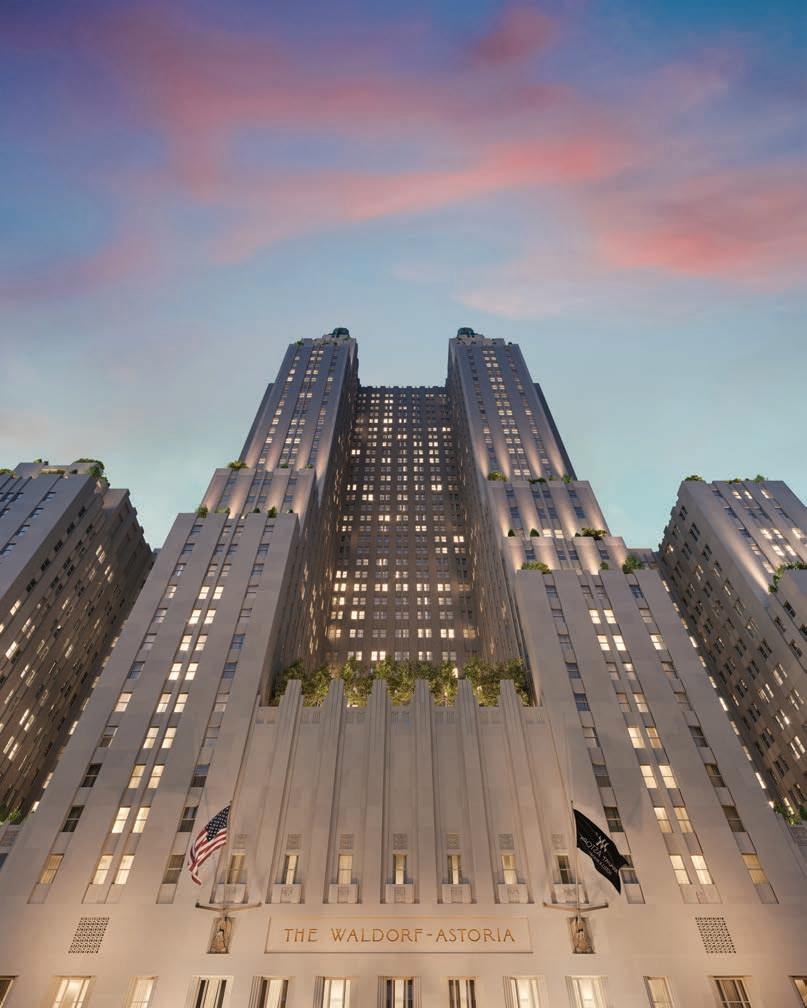
“The Greatest of Them All.”
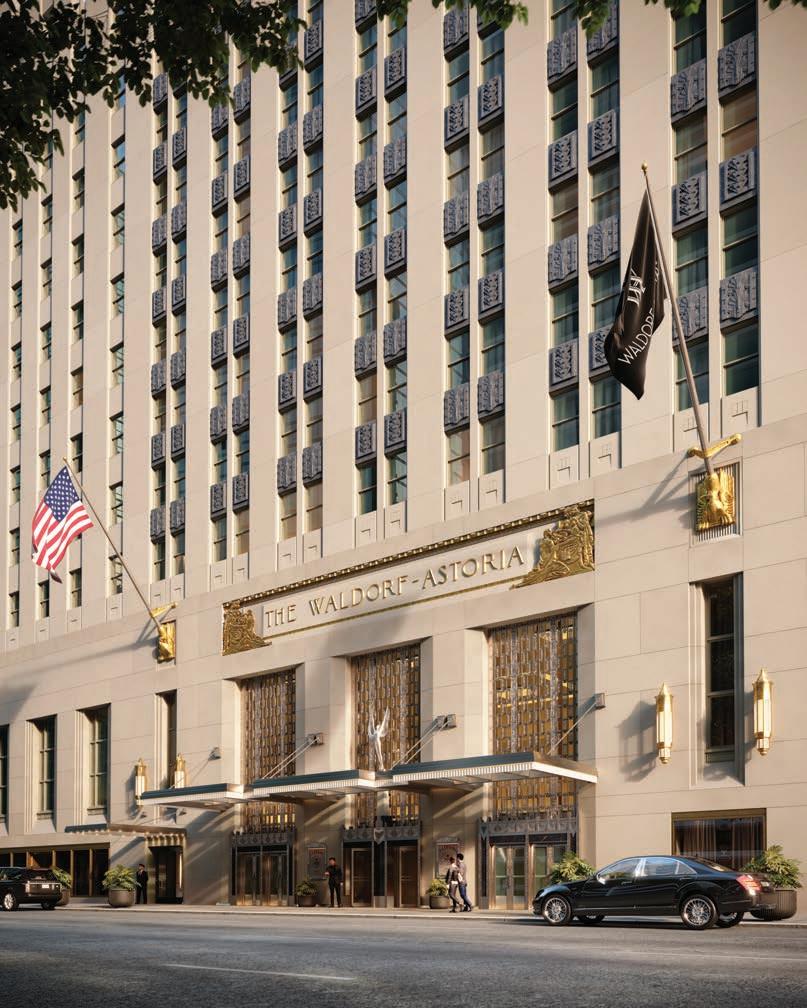
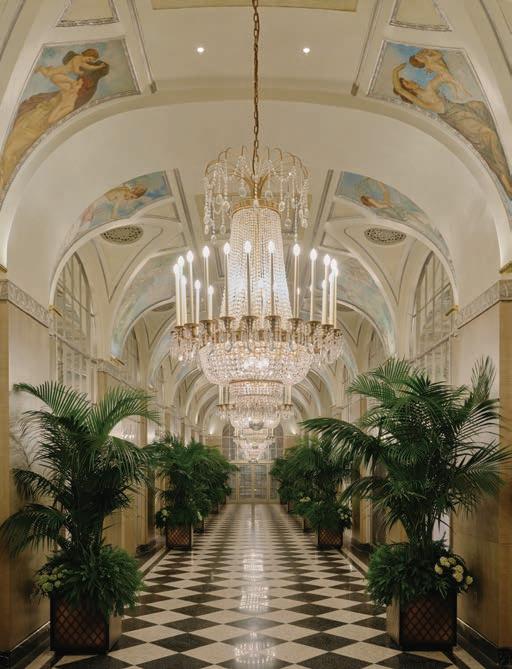
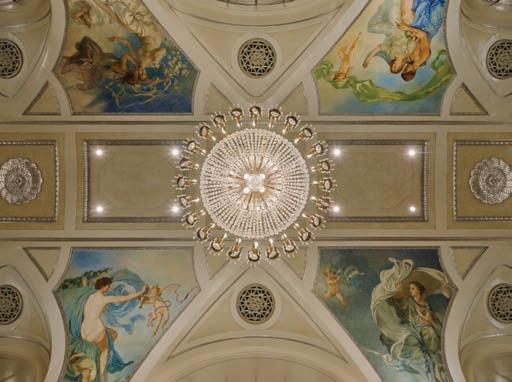
Few addresses in Manhattan carry the same iconic status as 301 Park Avenue. For generations, theWaldorf Astoria New York has been a symbol of the city’s grandeur and its social pulse, where art, politics, fashion and fame converged beneath its glittering chandeliers. After an eight-year restoration costing $2 billion, the doors of this landmark have reopened, marking the start of a new chapter in the hotel’s extraordinary story.
For much of the 20th century, the Waldorf Astoria defined the idea of modern luxury. It was where Grace Kelly danced, Ella Fitzgerald sang, and Cole Porter composed at his Steinway piano, the same one that now sits gleaming once more in Peacock Alley. Presidents and movie stars crossed paths with mobsters and magnates in the mirrored corridors, and the Grand Ballroom, with its gold leaf and cascading light, became the city’s most coveted stage.
Today, Waldorf Astoria‘s sense of theatre has returned. The hotel’s revival, led by architects Skidmore, Owings & Merrill and interior designer Pierre-Yves Rochon, honours its Art Deco heritage while reimagining it for the 21st century. Every ceiling, mural, and medallion has been painstakingly restored.
“Waldorf Astoria New York has served as the backdrop for so many significant moments across history,” says Danny Hughes, President of the Americas at Hilton. “Today we unveil the next chapter in its opening season, once again, this ballroom will be the centre of New York’s social scene.”



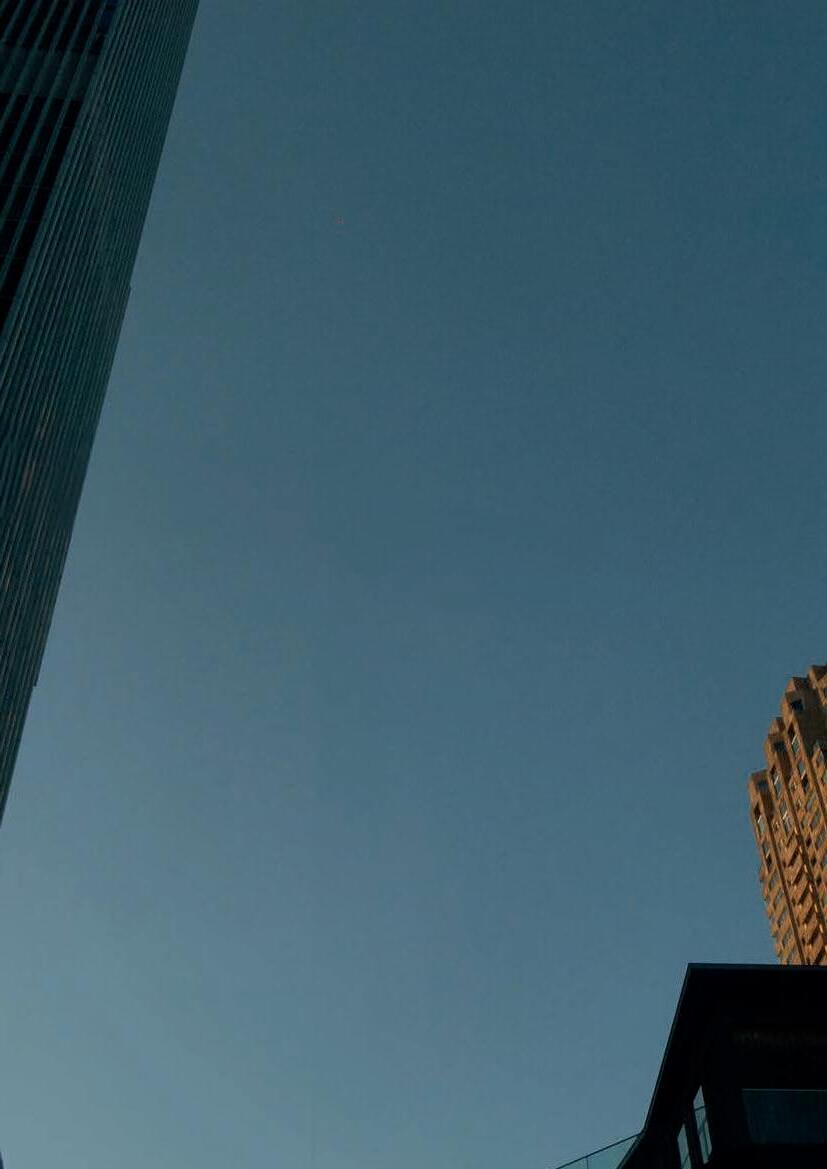


Starting from: €12,450*




*Price including 2025 government grant and scrappage scheme.



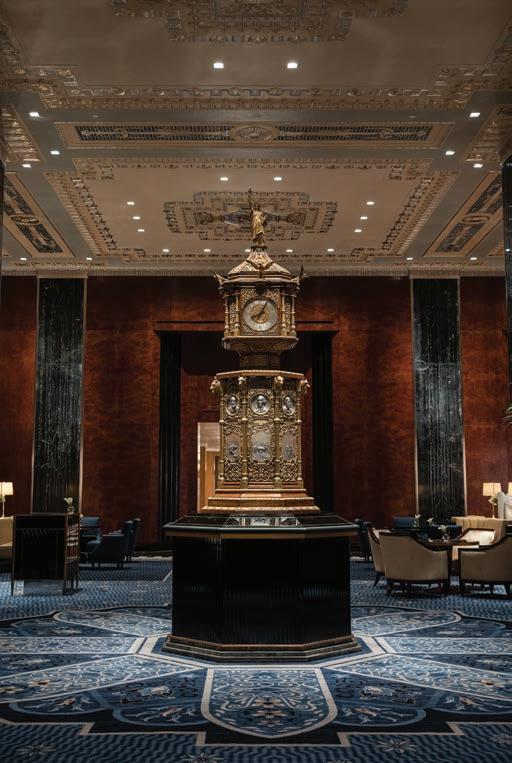
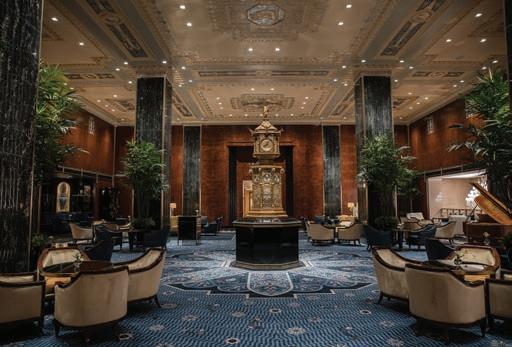
The Grand Ballroom remains its crown jewel, a three-storey expanse of gilded plasterwork and soft luminescence, now equipped with state-of-the-art sound and lighting that allow Broadway-calibre performances to unfold beneath its frescoed ceiling. The original decorative medallion by sculptors Eugene Rochette and Michael Parzini gleams once more, surrounded by a glow that replicates the building’s 1931 design. Nearby, the Silver Corridor shimmers with restored murals by Edward Emerson Simmons, salvaged from the original Waldorf and brought back to life by master conservators. The Basildon Room, its frescoes and English panelling returned to their 18thcentury splendour, is both intimate and regal, its palette rediscovered beneath layers of paint from a single 1930s postcard.
Throughout the property, history comes alive, updated with contemporary touches. The Jade Room, bathed in light that streams through double-height windows, once again hosts elegant receptions, while the Astor Salon, where Cole Porter and George Gershwin once played duets, has been reopened with its original columns revealed. The interiors blend precision and glamour, each room conceived as a celebration of craftsmanship.
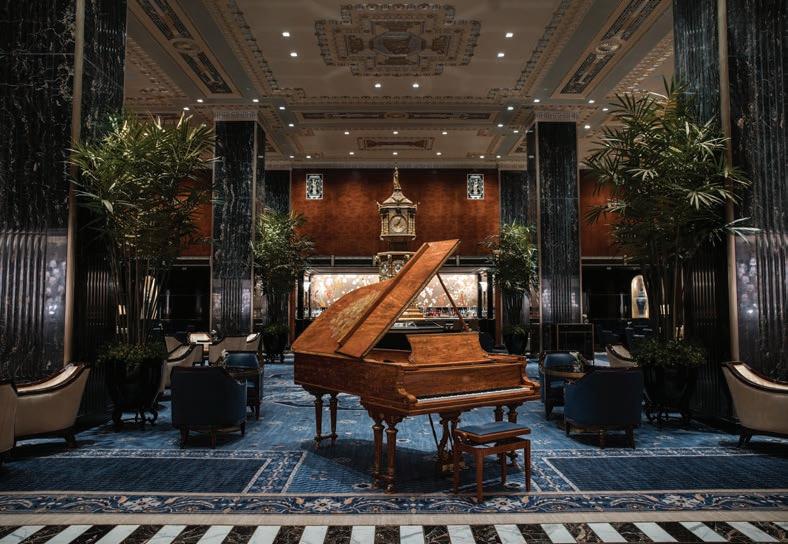
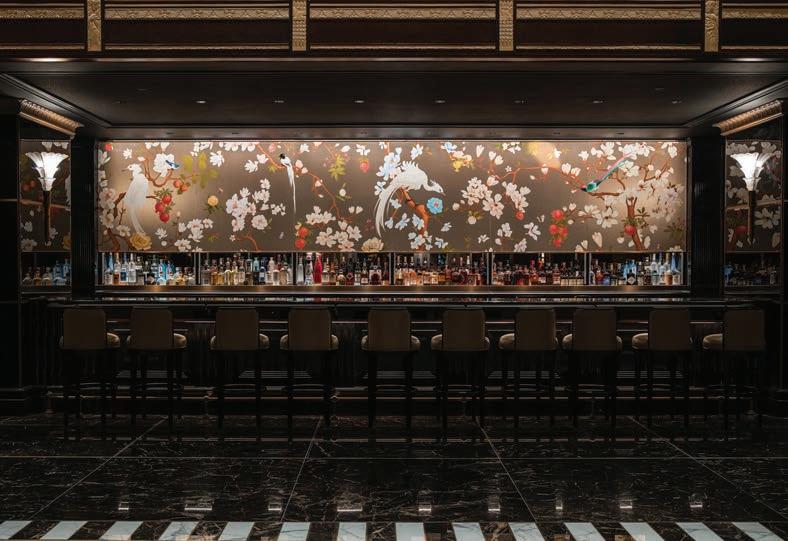


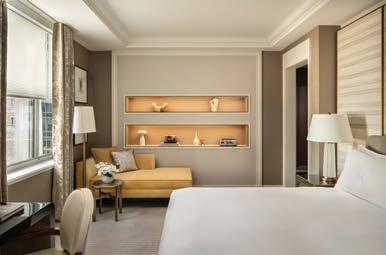
The transformation of the Waldorf also extends high above into New York’s skyline. What was once a 1,400-room hotel now houses 375 hotel rooms and 372 private residences, each a reflection of Park Avenue refinement. The guest rooms, designed by Pierre-Yves Rochon, evoke the feeling of elegant city apartments, with distinct spaces for living and resting. The five signature suites, from the Empire and Manhattan Suites to the palatial Waldorf Astoria Suite, reinterpret the grandeur of New York through the lens of modern comfort. The latter, spanning over 5,000 square feet, feels like an 18th-century Parisian residence reimagined for the skyline, complete with a grand piano and a private dining room overlooking the city.
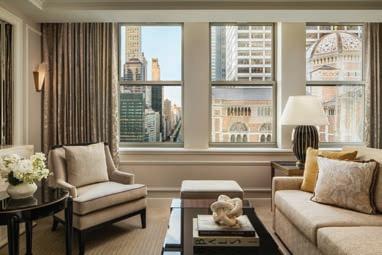







































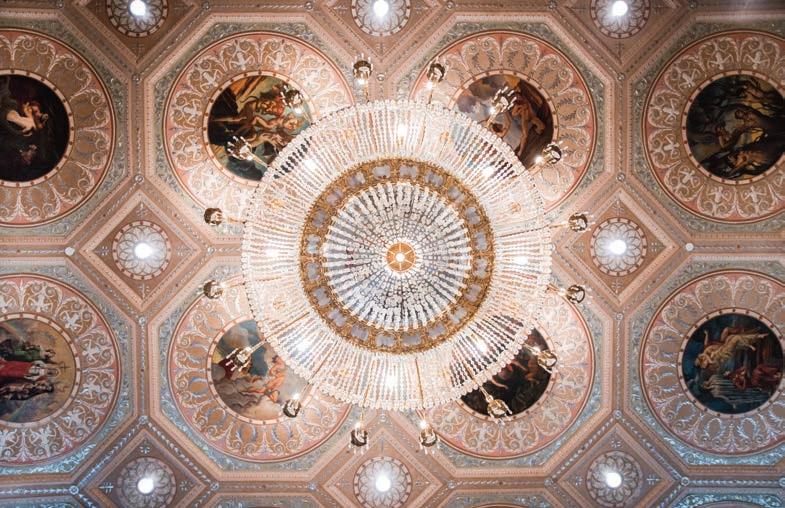
In the heart of the hotel, life unfolds once again in Peacock Alley, the celebrated promenade that has always been its social soul. Under the soft glimmer of restored lighting, New Yorkers gather for cocktails curated by Jeff Bell of Please Don’t Tell, whose menu nods to the golden age of mixology. Nearby, Chef Michael Anthony
leads Lex Yard, the hotel’s signature restaurant, where dishes such as Royal Ocsiètre Gold Caviar Sando and SlowPoached Halibut in Borscht Sauce offer a contemporary expression of New York’s culinary confidence. At Yoshoku, Chef Ry Nitzkowski fuses Japanese precision with Manhattan energy in a six-course tasting that balances grace with intensity.
When the Guerlain Wellness Spa opens later
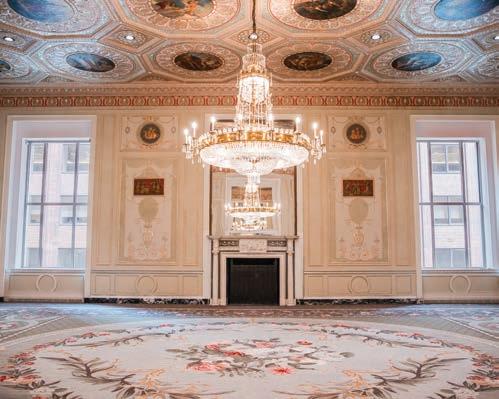
this autumn, the experience of the Waldorf will reach beyond glamour into the realm of well-being. Designed by Wimberly Interiors, the 20,000-square-foot sanctuary unites beauty and science under Guerlain’s philosophy of holistic health, where treatments are guided by the principles of nutrition, movement, sleep and mindfulness. It represents a modern counterpart to the hotel’s decorative splendour –a place where restoration of the body mirrors the renewal of the building itself.
Above it all sit the Waldorf Astoria Residences, 372 homes conceived by Parisbased designer Jean-Louis Deniot. From studios to penthouses, these residences extend the experience of the hotel into private luxury, with access to more than 50,000 square feet of exclusive amenities, including a 25-metre Starlight Pool overlooking Park Avenue. Residents enter through their own portecochère, but share in the sense of belonging to one of the city’s great institutions.
The reopening of the Waldorf Astoria New York really marks the return of a landmark entrenched in New York culture. It’s a reflection of a city that thrives on reinvention, where history and modernity converse in marble, crystal, and light. In a place that has always reflected the spirit of New York, the curtain has risen once again on the grandest stage of them all.As Conrad Hilton once described it, “the greatest of them all.”
Waldorf Astoria New York is located at 301 Park Avenue New York, New York 10022. waldorfastorianewyork.com




































































“One of the elements of decorating that makes me the happiest is when I have been able to help clients understand how crucial art is in putting their stamp on their rooms.”
Sheldon Harte
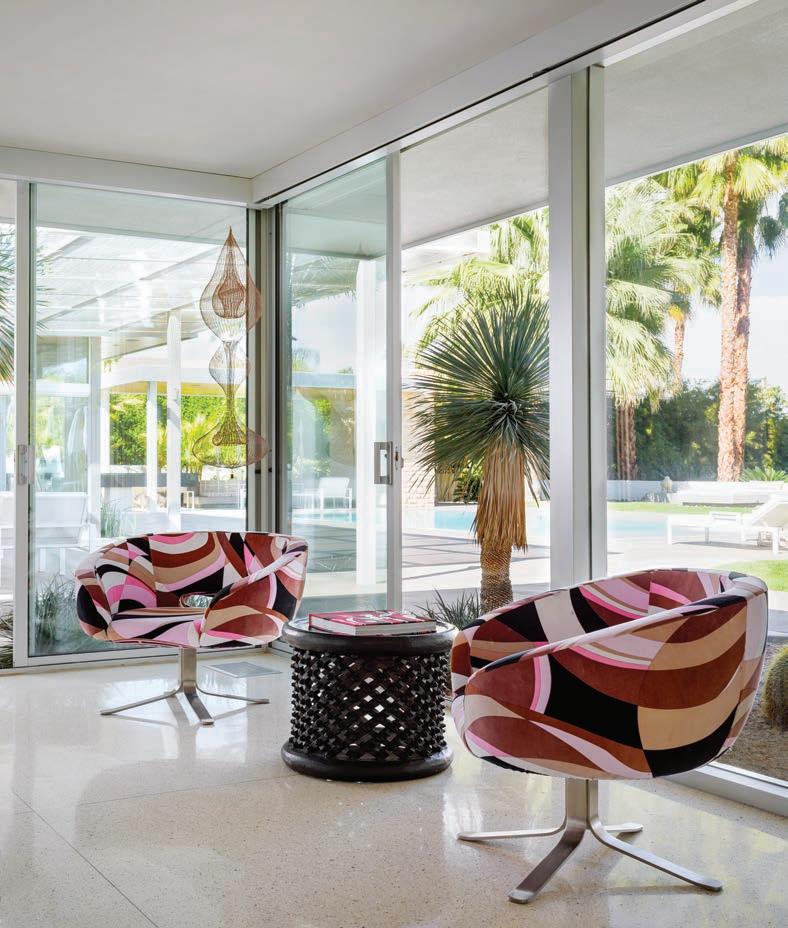
California designer Sheldon Harte brings art, craftsmanship and ease into elegant balance in The Refined Home, a richly visual study of interiors shaped by intuition, texture and timeless restraint.
Photography Trevor Tondro, John Merkl, Björn Wallander and Douglas Friedman, courtesy Vendome Press.
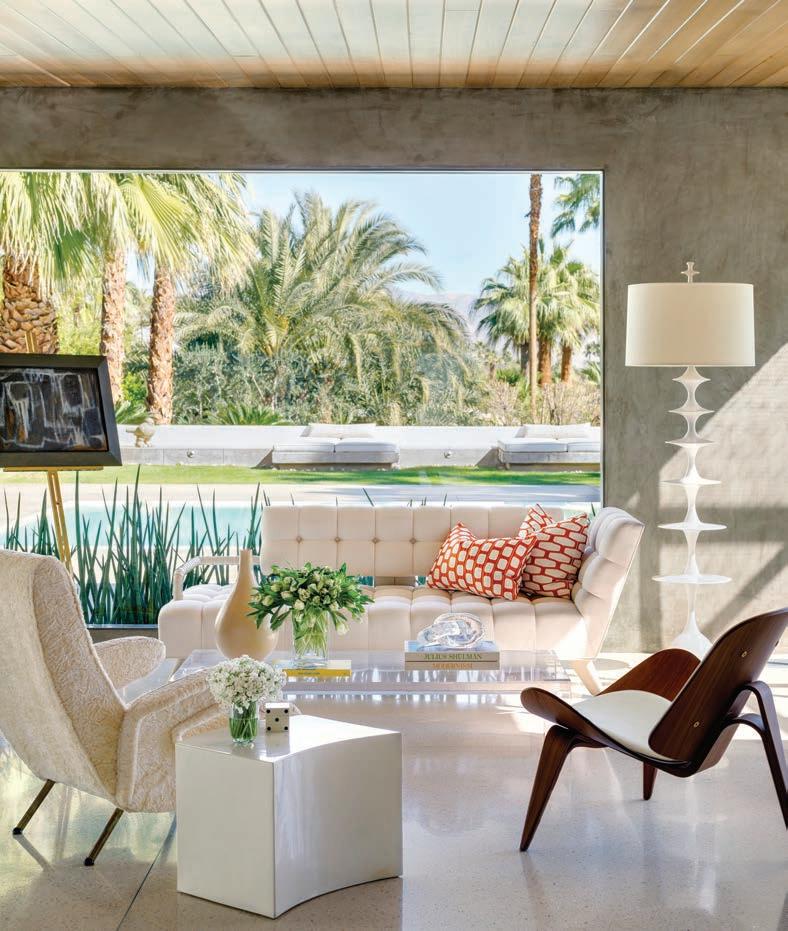
Preceding
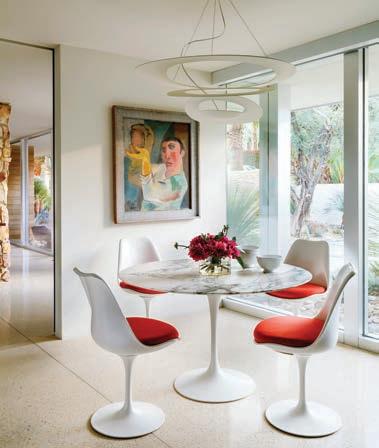
For California interior designer Sheldon Harte, refinement begins with an instinct for balance, between art and architecture, craftsmanship and comfort, precision and ease. His first book, The Refined Home: Sheldon Harte (Vendome Press), opens a window into that rare
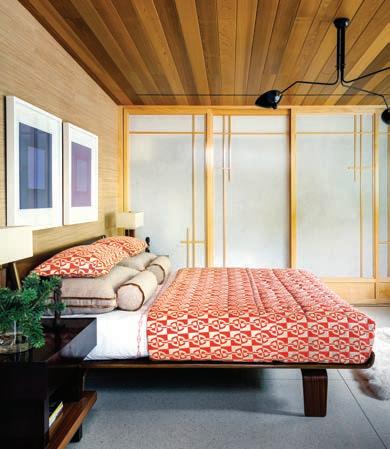
equilibrium. It gathers the defining projects of a career that spans four decades and distils the creative philosophy behind them: design as a deeply personal, richly layered pursuit of beauty.
Founder of Harte Davis Interior Design, Harte is known for creating interiors that feel both tailored and lived-in, homes that speak fluently in the language of California luxury; light-filled, relaxed,
and connected to their surroundings. From Malibu beach houses to Napa retreats and Pacific Palisades estates, his projects balance rigour with ease. Each is an individual portrait rather than a signature look. “Having a particular look is something I’ve never wanted in my work,” he writes. “Every project is something new and requires a different perspective.”
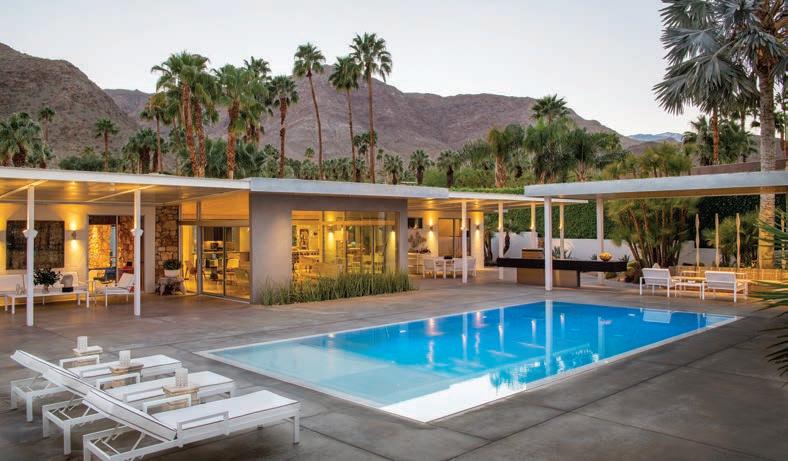
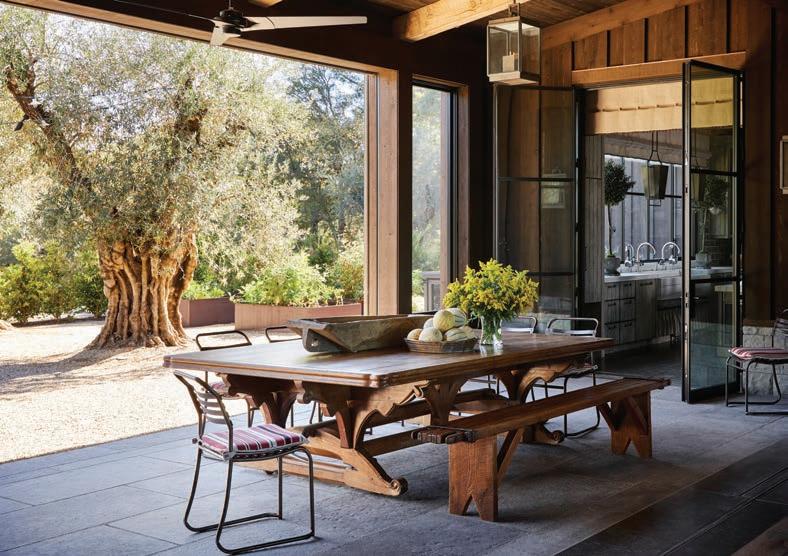
That openness has made him one of the most versatile designers on the American West Coast. With chapters like “Sensual Surfaces,” “Breaking with Tradition,” “Modernist Masterpiece,” and “Mid-Century Dream,” authors Mitchell Owens and Hadley Keller offer an exciting, behind-the-scenes look at his design process, emphasizing the importance of custom artisanship and evocative art. Within its pages, a modernist hillside house of glass and steel might sit beside a restored Spanish
Colonial filled with antiques, or a ranch house furnished with hand-hewn timbers, patinated brass, and contemporary sculpture. What unites them is Harte’s conviction that interiors should be as tactile and evocative as the art they hold.
His sensitivity to texture and tone began early. “Growing up in Southern California with a father who designed landscapes and pools and a mother in the fashion industry who used to take me antiquing with her, I was surrounded by a resourceful ingenuity,” he recalls. “My parents had good taste, and they appreciated an attractive home life. The house they built in the
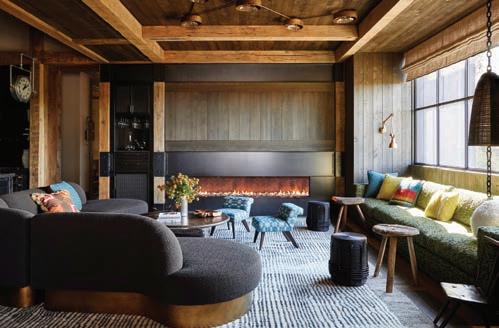
San Fernando Valley, shortly before I was born, was a Cliff May plan that the influential ranchhouse architect sold through magazines. It was simple, modern, and made of wood, and even when I was young, I was aware that it looked nothing like any of our friends’ houses. The exterior was painted what my mother called “old-money green,” a mossy color with a bit of brown in it, the carpet in the living room was Sauternes green, my bedroom was decorated with a toile de Jouy, and the floors were paved with freeform black slate.” The aesthetic taught Harte that a house could be stylish and full of character without being excessive.
Above: RARE VINTAGE. In the heart of California wine country, I worked with architect Kirby Lee, formerly of Howard Backen’s architectural firm, to create a large family estate that offered an incomparable indoor-outdoor living experience and set the stage for the clients’ eclectic collection of vintage and contemporary European furniture
Left: A sinuous Coup D’Etat sofa makes a sculptural statement in the family room, as do a pair of low Martini chairs by Willam (Billy) Haines, which are dressed in a Pierre Frey fabric. The custom-made fireplace was designed to look like recycled I-beams, and the custom-made ceiling fixture is a Paul Ferrante creation. Photography © John Merkl.


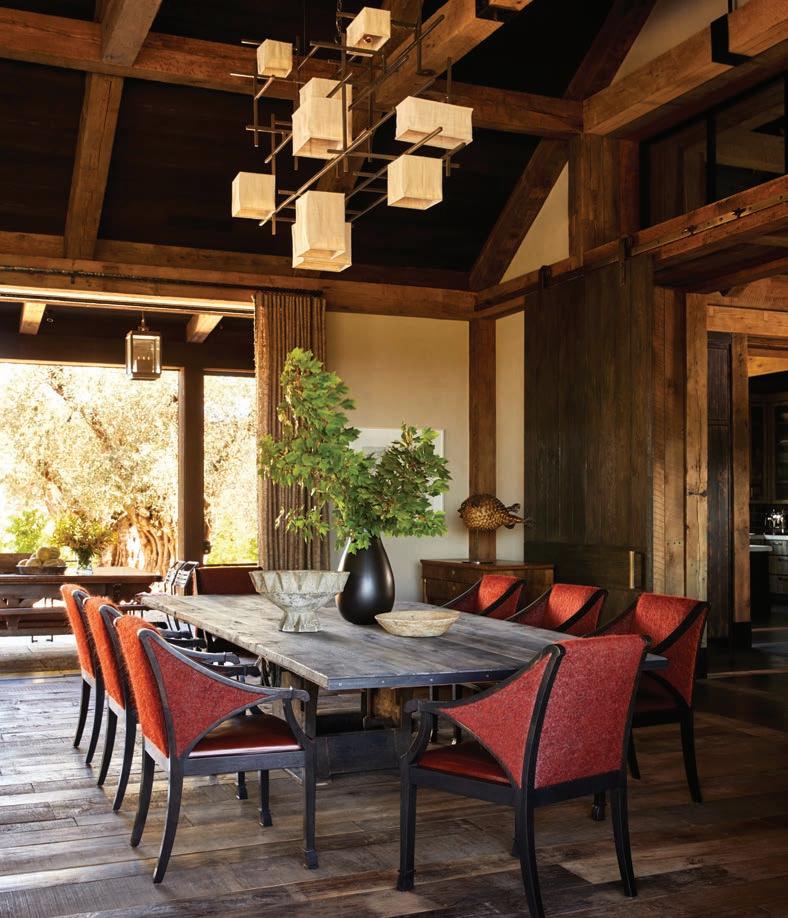
“Ididn’t go to design school, though; I majored in business, largely because my father said I needed a job that would support me. Design, however, was an important part of how I saw the world, so much so that when I was eleven years old, my stepmother was having a patterned wallpaper installed in my father’s and her bedroom, and I took one look and knew that
something was wrong. “It’s upside down,” I said. She didn’t believe me, so I got on my bicycle and pedaled down to the paint store and brought home a wallpaper sample book to prove it. Well, that was the beginning of something.” By twenty, friends were asking his advice on fabrics and finishes. Within a few years, he had launched his career, teaching himself to draw floor plans and sketch elevations. “Decorating just felt right to me,” he says. “It’s like a calling; I can’t imagine doing anything else.”
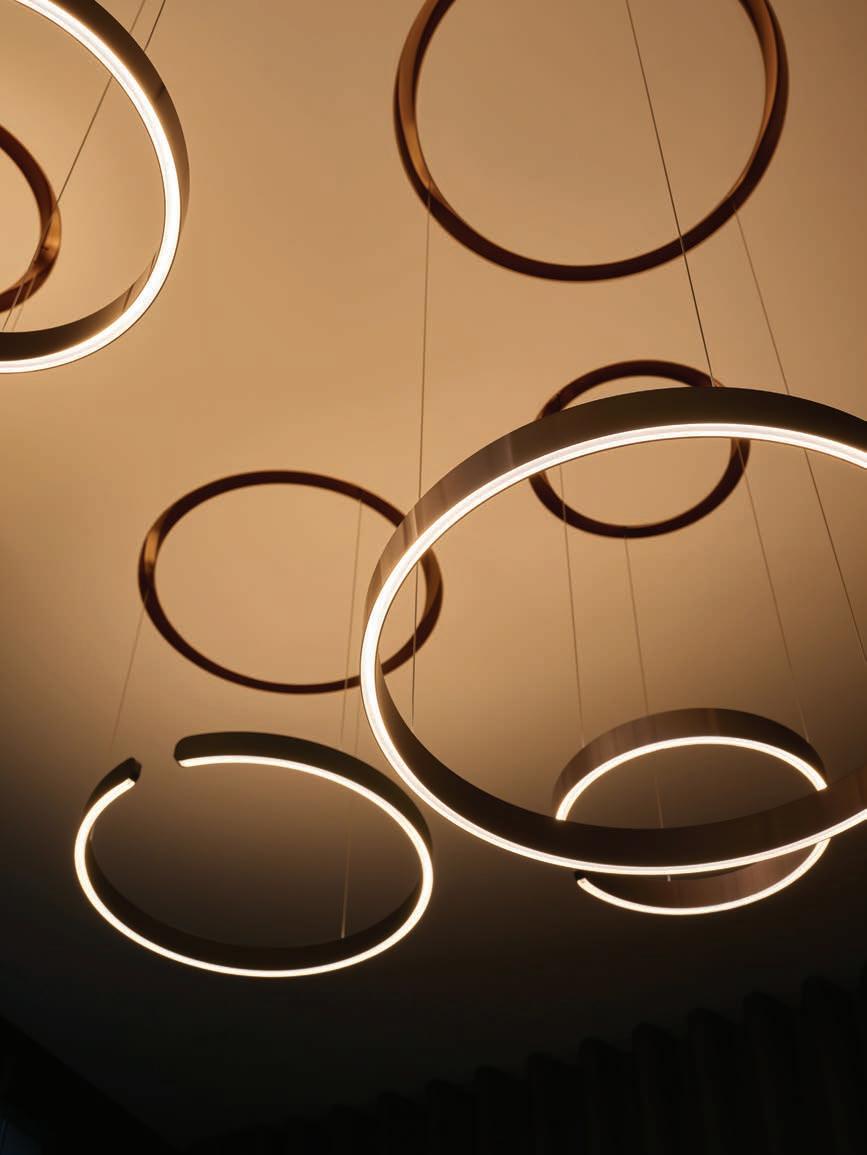
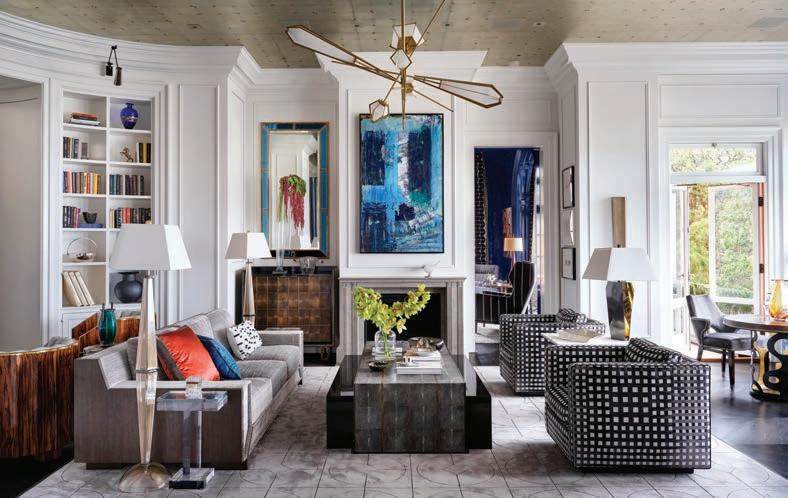
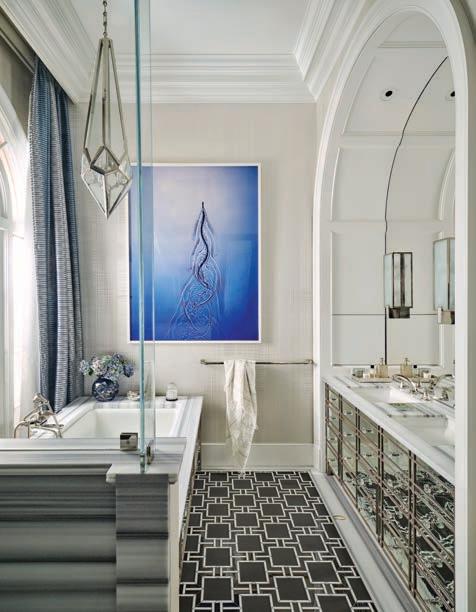
Above: A CONTEMPORARY APARTMENT. In the living room, tea paper on the ceiling lends a subtle glimmer, the addition of curved millwork and built-in shelves provides ample storage, and a mix of antique and contemporary furnishings speaks to the clients’ urbane style. On the left, a pair of 1930s André Arbus Salon chairs with wood backs greets guests. Gabriel Scott’s Harlow chandelier in smoked bronze and alabaster hovers above a 2007 painting by Louise Fishman. Left: In the small primary bath, verre églomisé–fronted cabinetry not only adds a shimmering patina but also makes the space appear larger; the soaring arch over the vanity contributes visual interest. Photography © Trevor Tondro.
That energy carries through the book. Harte has designed multiple homes for some clients, “during the course of my four-decade career, I have designed four, five, and even more houses for the same client, from city to country, beach to mountain, and everything in between,” each distinct, yet bound by an intimate understanding of how they live. His interiors are never stage sets; they are environments for daily life, layered with comfort, memory, and personality.
While The Refined Home captures his work, it also gives Harte the opportunity to demonstrate the importance of art to every interior. “One of the elements of decorating that makes me the happiest is when I have been able to help clients understand how crucial art is in putting their stamp on their rooms and then introduce them to gallerists and art consultants I trust and whose taste I think the clients would appreciate. After that, I tend to step aside, because selecting art should be entirely personal.”

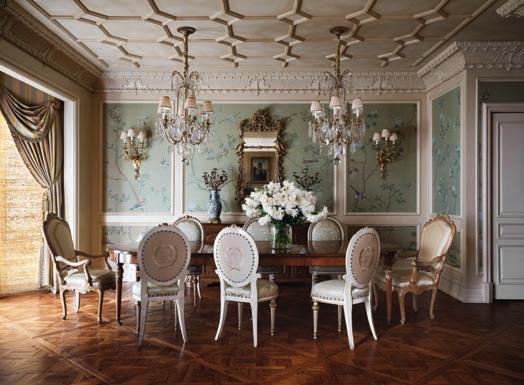
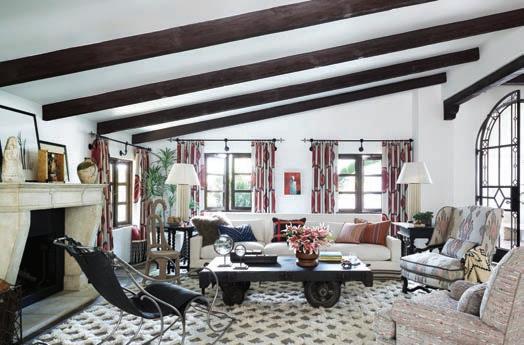
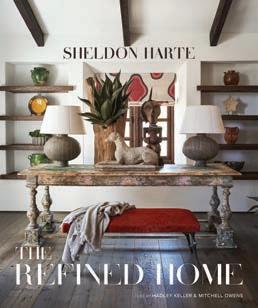
Top: HACIENDA STYLE. Behind a custom wrought-iron door manufactured in Los Angeles, this large living space presents an eclectic array of furniture, from collectible midcentury to found vintage pieces. The drapery fabric is by Porter Teleo, and the rug is from Hart’s Rugs & Carpets. Photo © Björn Wallander. Above: FRENCH FASTASY. Green silk scenic panels by de Gournay are set into intricate millwork in the dining room, where the backs of Louis XVI dining chairs from C. Mariani Antiques feature a crest designed to resemble eighteenth-century examples. Photo © Douglas Friedman.
This combination of sophistication and ease gives Harte’s work its enduring allure. The Refined Home is an elegant reminder that design, when approached with sincerity and curiosity, can elevate the everyday to the realm of art.“This is really what the best decorating is all about: an end result specific to a person or a couple or a family. I am fortunate enough to bring it all together.”
SHELDON HARTE, founder of Harte Davis Interior Design, is an award-winning interior designer whose distinguished career began in the creative enclave of Laguna Beach, California, in 1984. With over 350 full-scale interior design projects in his portfolio, Harte’s work has garnered national and international recognition and has been featured in ArchitecturalDigest.com, House Beautiful, Elle Decor, Luxe Interiors + Design, international editions of Architectural Digest and ELLE Decoration, The Wall Street Journal, California Home+Design, HGTV’s Top 10, and more. He is a member of the American Society of Interior Designers (ASID).
MITCHELL OWENS, a prolific design writer and lecturer, has been a reporter and columnist at The New York Times and has served as editorin-chief of The Magazine Antiques, American editor of The World of Interiors, and decorative arts editor of Architectural Digest, where he hosted The AD Aesthete podcast. He was a founding editor of the LGTBQ+ magazine Out and held editorial positions at Nest, Elle Decor, Traditional Home, and Travel + Leisure. He is also cofounder of Irwin & Lane vintage furniture dealers. He lives in Cooperstown, New York.
HADLEY KELLER is the director of editorial and community engagement at the Design Leadership Network, a community of top interior designers. Previously the digital director of House Beautiful, she has been writing about design, interiors, and culture for over ten years. In 2021, she authored Vendome’s Beachside Keller is on the board of the Oasis Alliance and a member of the White House Historical Association’s Next Gen Leaders cohort. She divides her time between New York and Washington.
THE REFINED HOME: SHELDON HARTE By Sheldon Harte. Published by Vendome Press. Hardcover, 280pages.











Let your immunity PROTECT you with the right intake of Vitamin C
To counteract the first symptoms of colds & flu.
Reducing the duration of illness.
Effective in improving the immune system.
Marvit Vitamin-C 1000MG is a Food supplement in convenient effervescent tablets.
Active Ingredients:
Vitamin C available in concentrations of 1000 – 180 mg
Zinc 12.5 mg
Echinacea 10 mg
Selenium 55μg
Great taste with red blood orange.
1 Effervescent tablet daily before a meal.

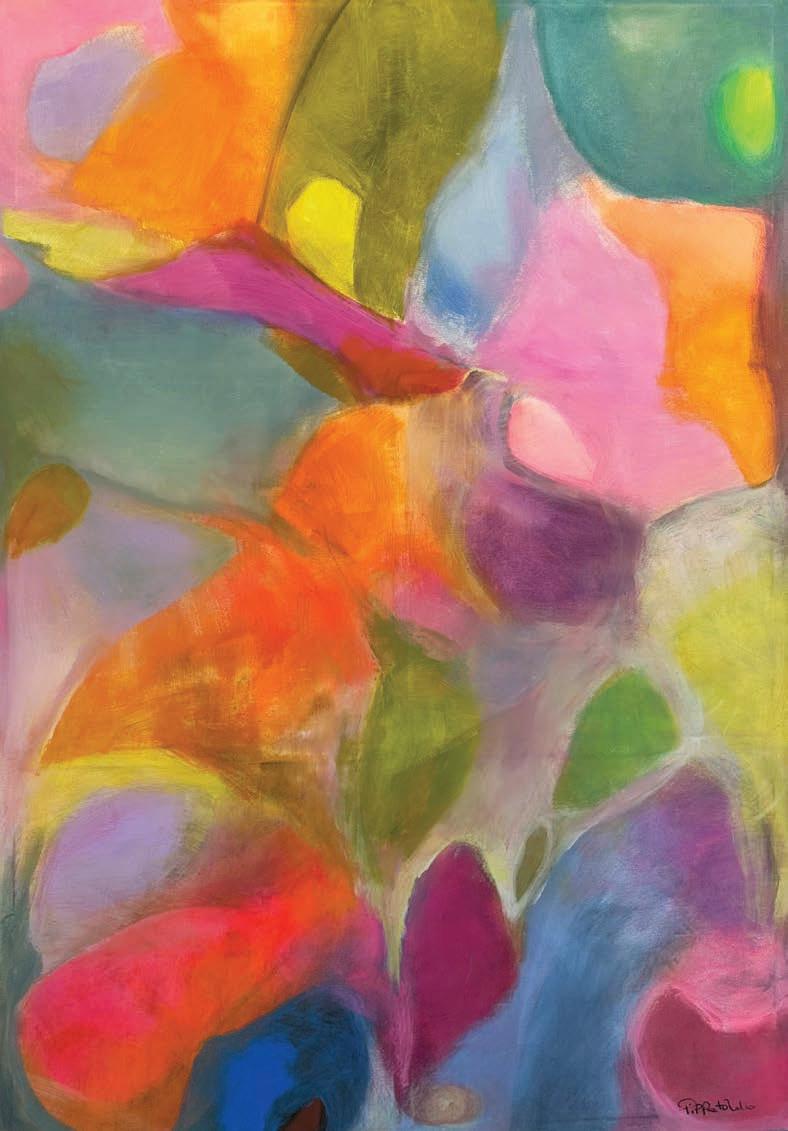

For Pippa Toledo, creativity has always been a dialogue between intuition and design, between structure and freedom. Known for her refined interiors, which balance luxury with an inviting sense of ease, Toledo brings the same instinctive elegance to her art. Her work in design, honed over more than three decades, has shaped an approach where imagination meets discipline, and colour serves as both narrative and emotion.
Photography courtesy Pippa Toledo.

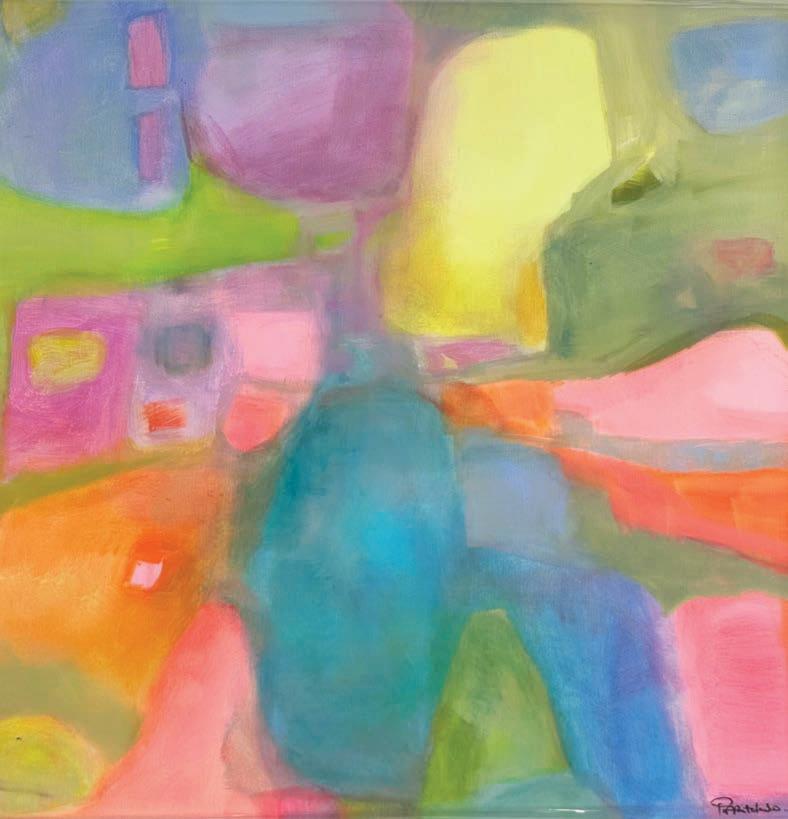
As an interior designer, Toledo is admired for her ability to transform bold concepts into environments that feel lived in and deeply personal. “I’ve always kept true to my design principles rather than being led by a current trend,” she says. “I want my designs to be timeless and elegant. But before I begin any project, I take the time to understand the people I’m designing for,
their rhythm of life, what makes them happy. Ultimately, they are the ones who have to live in it.”
In her paintings, the conversation shifts. Here, there is no client, no brief, only the canvas. This is where Toledo’s imagination expands in full colour. Freed from constraint, she explores the sensorial side of creativity, where emotion is expressed through gesture and hue. “Mine is a lifelong love affair with art, inspired by the beauty that I see around me,” she says.
A self-taught artist, Toledo launched her first solo exhibition, Textures, in 2003, a tribute to her late father’s own passion for art. Over the years, her painting has evolved into a deeply personal language of abstraction; fluid, luminous, and full of movement. This July, her most recent exhibition, The Language of Colour, held at Camilleri Paris Mode in Rabat, unveiled a collection that embodies the same joy and fearless use of tone that defines her interiors. The works invite the viewer into a world where colour is emotion and light becomes voice.

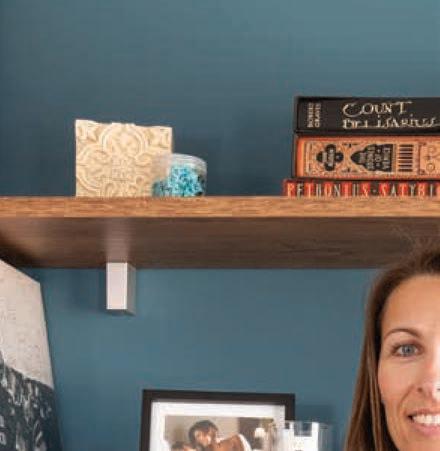
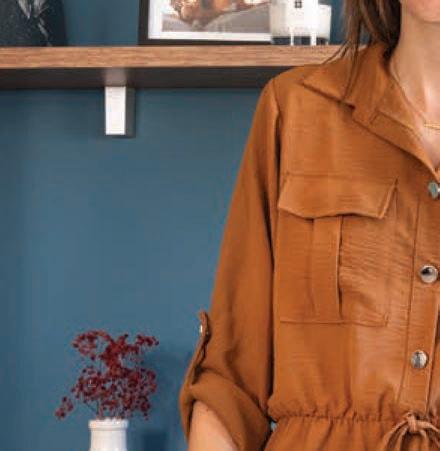



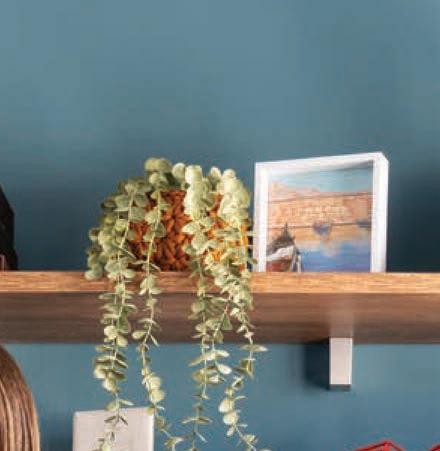
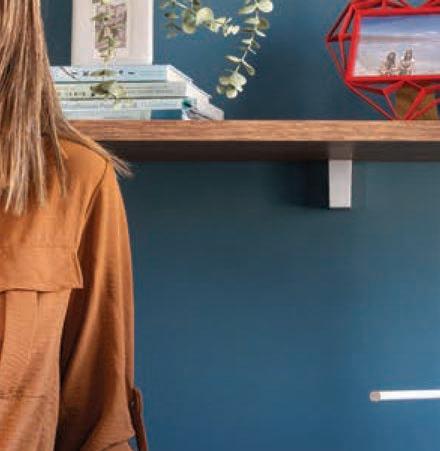


“My partner and I were inclined towards a shade of blue for the study, and after looking online for inspiration and using Sigma’s colour visualiser tool, we weren’t sure whether to go for such a bold colour initially. Since the room is really well lit, we decided to just go for it – and we’re so happy we did! It really complements the furniture, and makes the space feel really vibrant.



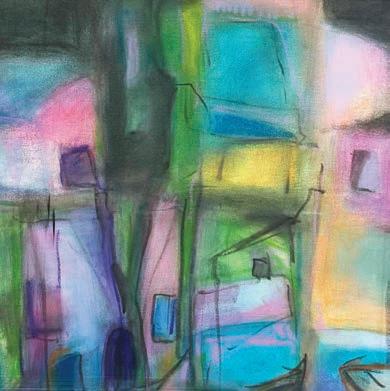
The title painting, The Language of Colour (180x120cm), radiates vitality through its composition of warm oranges, yellows, pinks, and magentas. Organic shapes overlap and dissolve into one another, their rhythm recalling petals caught in a breeze. Echoes of Light (102x102cm) has a gentler, more meditative spirit; a haze of pastel tones that glow as though illuminated from within. Its atmosphere evokes the softness of memory, where light itself becomes the subject.
Nature, a constant thread in Toledo’s creative world, finds new expression in Fresh from the Garden (100x100cm) and End of Summer (90x90cm). The first bursts with abundance, a celebration of colour and form inspired by nature at its most exuberant. Blooms and foliage intertwine in vivid layers, alive with movement and light. End of Summer, by contrast, reflects the quiet transition of the seasons, its deep, mellow tones and soft textures capturing the poetry of fading petals and the last warmth of the year.
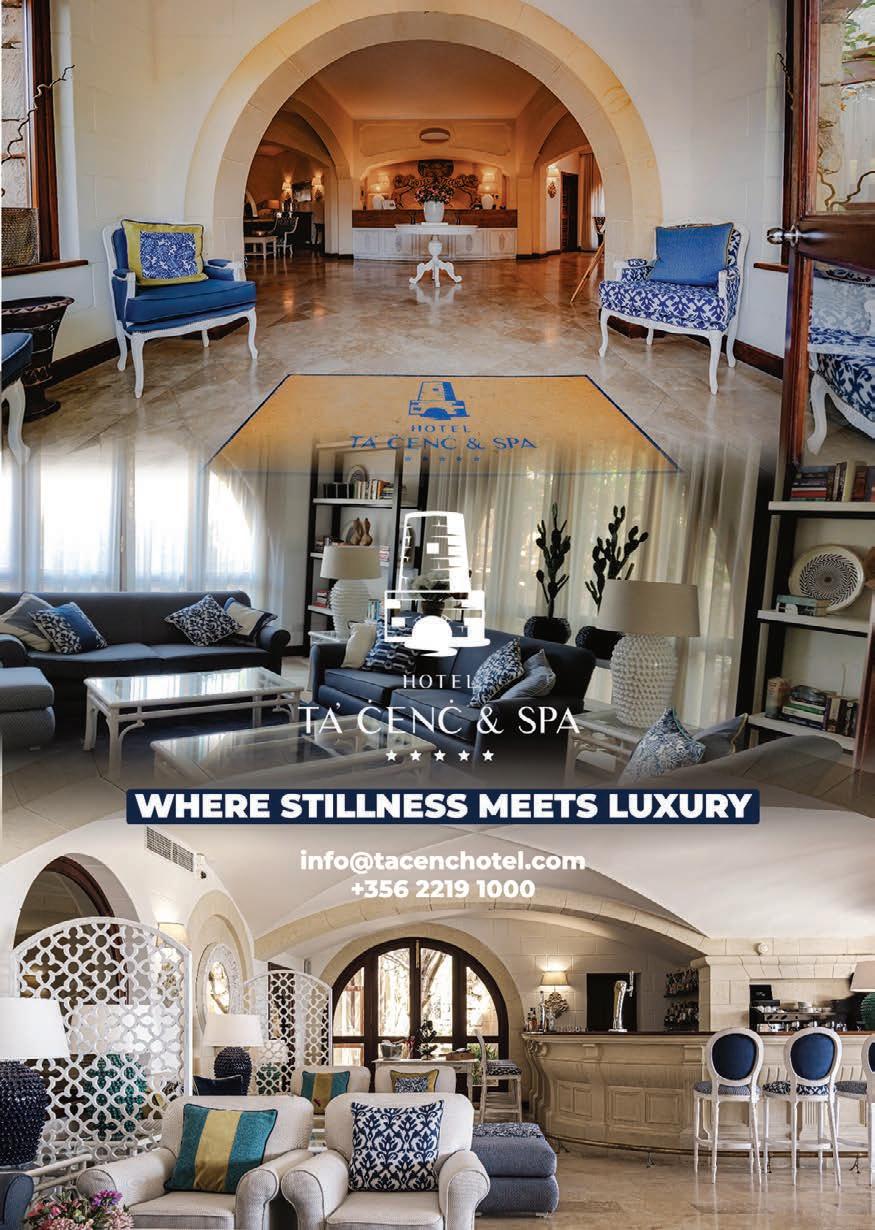
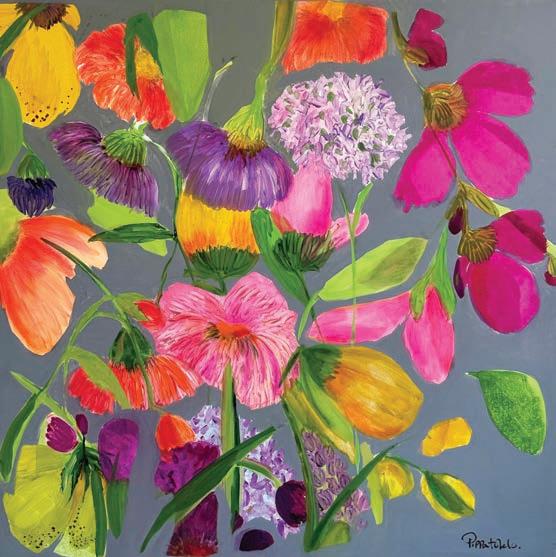
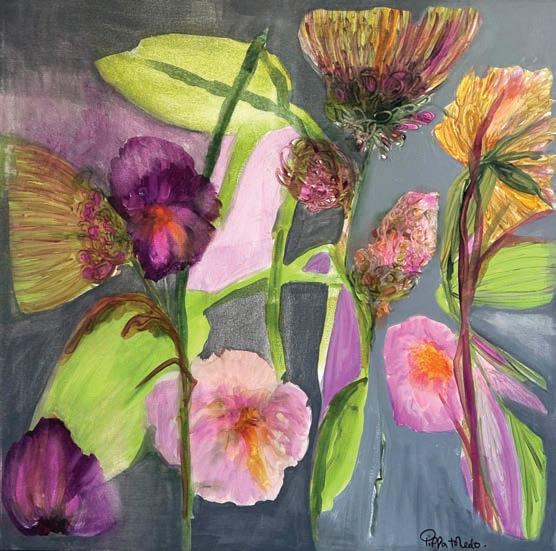
Below: End of Summer, 90x90cm, mixed media on canvas.
In City of Echoes (70x70cm), Fragments of a Journey (60x60cm), and Lanterns in the Dusk (150x100cm), Toledo explores memory and emotion through abstraction. City of Echoes suggests an imagined metropolis seen through mist and light, where tones of blue, green, and violet merge like reflections on glass.
Fragments of a Journey evokes recollections of travel and place, earthy yet luminous, its forms hovering between landscape and feeling; while Lanterns in the Dusk delivers a contemplative feel: soft, glowing shapes drift across a deepening sky, a vision of serenity where colour dissolves into memory.











5-9 November 2025 MFCC Ta’ Qali










Visit the University of Malta stand to connect with THINK Magazine, Malta University Press and Malta University Distributors.
From a great choice of publications to special guests and events, there will be something of interest for everyone at our stand.

fb.me/e/3whnR1baQ The Malta Book Festival
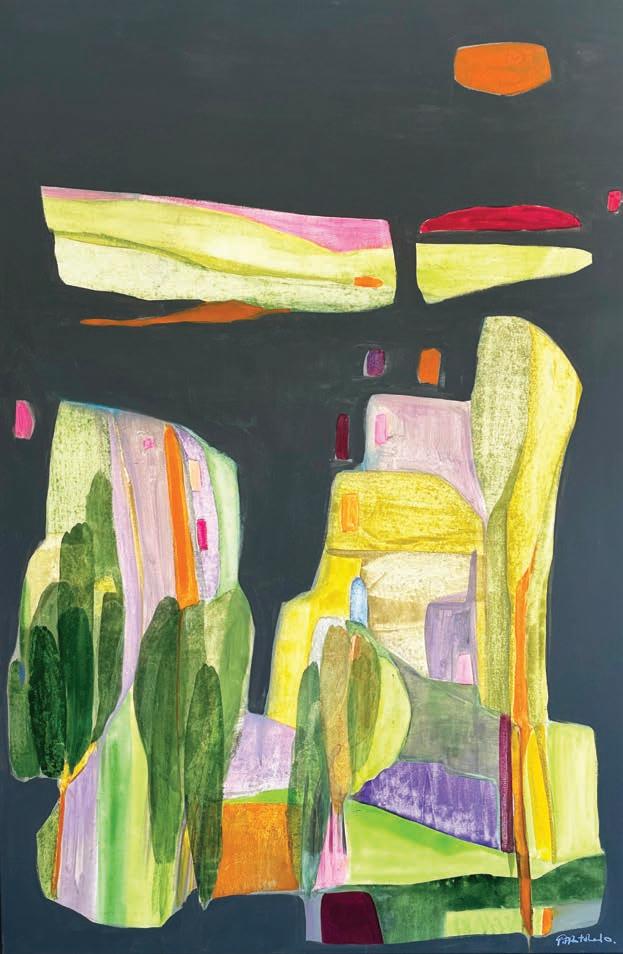
Toledo’s art and interiors are deeply interconnected, fueled by emotion, filled with sensitivity, and guided by her natural sense of harmony. Her newest collection showcases the heart of her creativity, brought to life through colour, balance, and an ongoing quest for beauty.
Pippa Toledo’s work can be seen at her studio, Pippa Toledo Design Ltd, 115 Windsor Terrace, Sliema. Phone: +356 2132 3616 / 2134 1367, www.pippatoledo.com
This page: Lanterns in the Dusk, 150x100cm, mixed media on canvas.

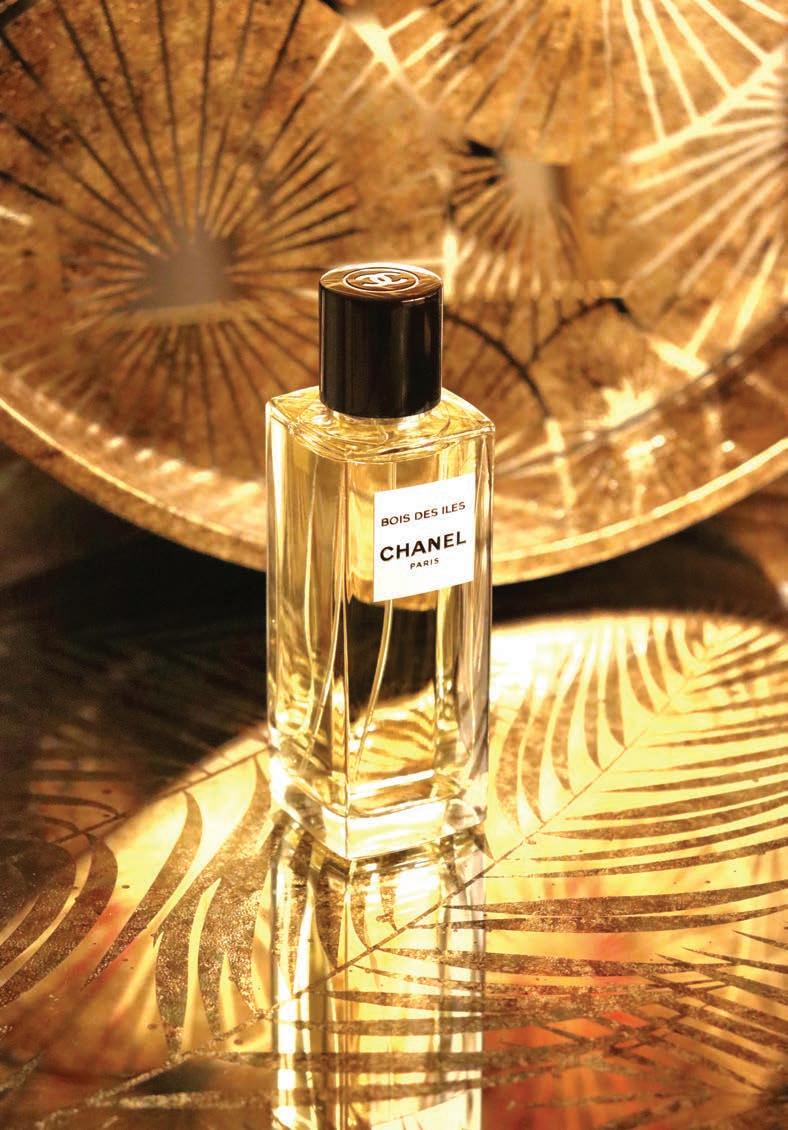
“Whom shall I send, and who will go for Us?’ Then I said ‘Here I am! Send me.” Isaiah 6:8
Language and words are the mathematics and numbers of philosophy and its pursuit of wisdom. Technologically we may just be out of the Iron Age and hurtling swiftly into the Silicon Age, but spiritually and philosophically we are still primitively in the Stone Age. We have no idea who or what we are, nor who or what we can be; we have no idea what we are doing nor what we can do, writes Kris Bonavita.
Photography Sean Gabriel Ellul.
For truthful words are strong in the hands of the weak and useless in the hands of the strong. And power is always an abuse of power; one which if we had any idea of, we would wield with a humbling and utmost care; and those most fit to rule are least likely to want to do so; and those in seeming power least fit.
For we bow down to human gods that we have made; ones in our own superficial image and likeness. Not showing some inward veracity and truth nor moral fibre; but adhering to exterior wants, superfluous needs, contrived excuses. It is not that all powerful people are liars; but all liars are powerful people who have figured out and wielded that it is to our advantage to fly in the face of telling the fundamental truth and good, by fabrication; for a longer-term misconstrued intention and lesser evil. We are all guilty of this as a society but innocent as a person, for we adhere to principles on the outside that go against
beliefs we have on the inside. Indeed, where were we when the foundations of the earth were laid down, when the fabric of the universe knit? Where were we when face and form were sculpted; heart, soul and sinew forged? Did we name the constellations, set route to the stars, angle the planets and scatter moons?
Maybe in our minds, maybe in our lost histories, we were there and we did; but we have no recollection, we have no means to justify our wealth. Wealth of being, of knowledge, of substance; of any claims to the truth and it being part of us. None whatsoever. Except for an appreciation of good; a recognition of love; an ascertainment of beauty. We can see in others and the world; and we can acknowledge that what we see, may just about have some sounding in us, but who of us will claim as much or more? Who of us can claim to know and be good? Life is too short, the world too wonderful, and we too precious. But we do not act as such, we fail to see the true image and likeness.
“Throw more perfume on yourself, like a fixative on a watercolour. Let me have the atomizer. Let me put perfume all over you so that you won’t disappear and fade like a watercolour” ANAÏS NIN
When BOIS DES ILES first appeared in 1926, Paris was alive with the rhythm of the Jazz Age. The flapper had replaced the corseted silhouette, cheetahs on diamond-collared leashes strolled through the Place Vendôme–Josephine Baker’s pet cheetah, “Chiquita,” once escaped into the orchestra pit during one of her performances, causing chaos among the band– and Gabrielle Chanelwas at the centre of it all, an arbiter of modernity and allure. Out of this world of light and rhythm came a fragrance that captured its spirit: the first true woody perfume for women, BOIS DES ILES
Composed by Ernest Beaux, the perfumer behind CHANEL N°5, BOIS DES ILES captured its time, yet hinted at something timeless. Where N°5embodied abstraction, BOIS DES ILES was a portrait of exotic sophistication. Chanel and Beaux drew inspiration from distant lands and musical harmonies, creating a scent said to echo the romanticism of Tchaikovsky’s opera Queen of Spades. It was a composition of remarkable depth, where sandalwood and florals met in an orchestration of light and shadow, evoking the glamour and freedom of the 1920s with refined restraint.
At its heart lies New Caledonian sandalwood, creamy, resinous, and warm, layered with ylang-ylang, jasmine, rose and lily of the valley. A soft touch of citrusglimmers at the opening, while aldehydes lend a polished, luminous texture reminiscent of cut glass in candlelight. As the scent evolves, coriander seed and cumin introduce a subtle heat that ripples through the composition, deepening into a smooth drydown of vanilla, tonka bean and iris. The result is at once sensual and composed: a fragrance that lingers close to the skin, radiating confidence and effortless sophistication. When BOIS DES ILES was reissued in 2007 as part of LES EXCLUSIFS DE CHANEL under Jacques Polge, its spirit was
perfectly preserved. LES EXCLUSIFS is the House’s most intimate collection, nineteen eaude parfum that trace the creative and emotional landscape of CHANEL. Each fragrance tells a story from the House’s history, revealing aspects of Gabrielle Chanel’s temperament, her independence, clarity, and appetite for beauty. Among the four early masterpieces by Ernest Beaux restored for the collection, BOIS DES ILES remains one of the most transportive, a scent that moves between eras with grace.
To wear BOIS DES ILES is to step momentarily into that luminous era, the air filled with possibility. Exoticism was the prevailing fascination, Ballets Russes, Chinese screens, lacquered furniture, and faraway motifs dominated the Parisian imagination. Yet Chanel approached the idea with her characteristic restraint. BOIS DES ILES does not depict the tropics in literal colour; it interprets them through texture and tone, turning the idea of distant isles into an abstraction of warmth and elegance.
The aldehydic opening sparkles, giving way to the soft hum of woods and florals. The sandalwood base, enveloping, becomes the steady pulse beneath the fragrance’s shifting notes. It is here that one understands the artistry of Beaux and the visionary sensibility of Chanel herself: every note feels deliberate, each nuance precisely placed, yet the effect is entirely natural, an olfactory equivalent of perfect tailoring.
Its balance of opulence and discretion reflects the essential paradox at the heart of CHANEL: luxury expressed through simplicity, sensuality refined by structure. It wears as beautifully on a contemporary man as on a woman, revealing different facets of warmth and poise.Nearly a century later, BOIS DES ILES feels as modern as it must have in 1926, a time when Gabrielle Chanel, guided by her vision of modern beauty, distilled the sound of jazzand the serenity of sandalwood into a fragrance that continues to speak in the language of elegance.
CHANEL is distributed by Alfred Gera & Sons Ltd.
LES EXCLUSIFS DE CHANEL fragrances for women and men evoke various chapters of Mademoiselle’s story. Find LES EXCLUSIFS DE CHANEL exclusively at CHANEL Fragrance and Beauty Boutiques, and online at chanel.com
Facing page: Coco Chanel worked with Ernest Beaux to create CHANEL N°5, which launched in 1921. In 1926, they introduced BOIS DES ILES, the first Woody-Oriental fragrance in perfume history.

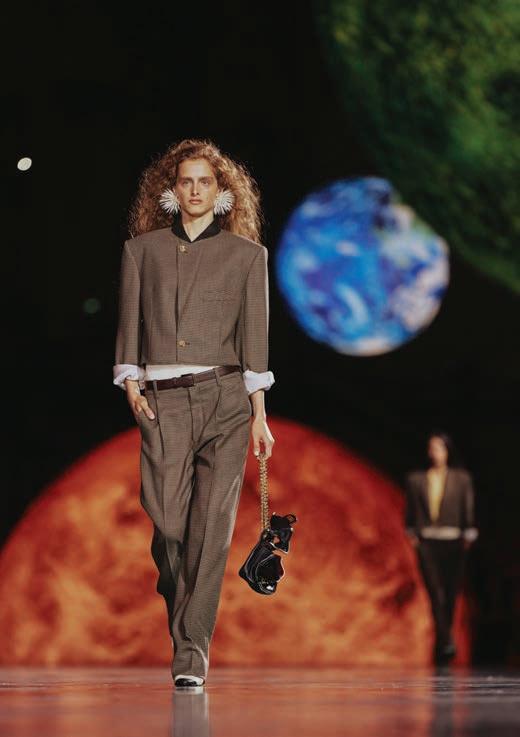
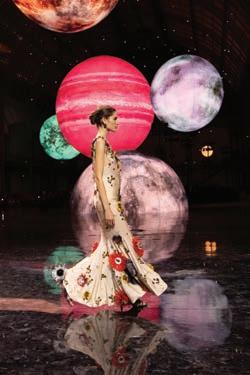
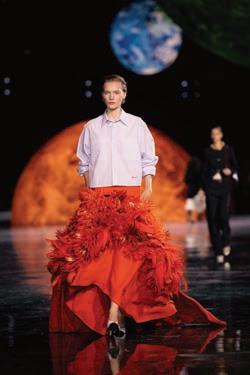
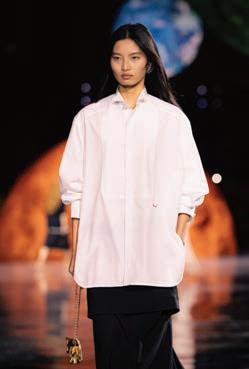
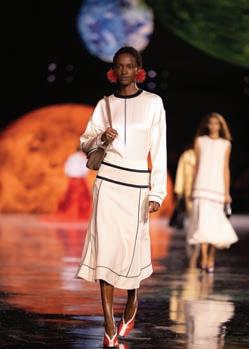
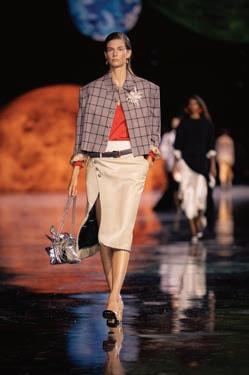
Paris Fashion Week ended on a high note this October with Matthieu Blazy’s debut for Chanel, a collection that reimagined the codes of the house with emotional clarity and intellectual precision. Beneath the glass vaults of the Grand Palais, transformed into a glittering planetarium, Blazy unveiled The Universe of Chanel, a poetic dialogue between past and future, Gabrielle Chanel and himself.
Photography courtesy CHANEL.
“Chanel is about love. The birth of Modernity in fashion comes from a love story. This is what I find most beautiful. It has no time or space; this is an idea of freedom. The freedom worn and won by Gabrielle Chanel”, said Matthieu Blazy. That freedom coursed through the collection: the line between masculine and feminine dissolved, tradition and experimentation danced together, and craftsmanship found new elasticity. Blazy began where Chanel herself once
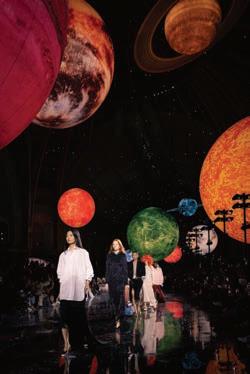
did, with a man’s shirt and trousers borrowed from Boy Capel, her most significant other. The shirt then was by the historic French shirtmaker, Charvet, today, it is made together with Chanel, reshaped through the House’s unmistakable lens: weighted by chains, and joined by masculine-style suit jackets, raw-edged tailoring tweeds pressed and agile, and jackets cut to reveal rather than conceal structure. Daywear was lived-in and tactile, with crushed 2.55 bags exposing their burgundy linings, frayed silks, and camellias that appeared as if gently crushed by time.
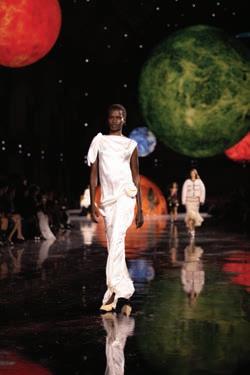
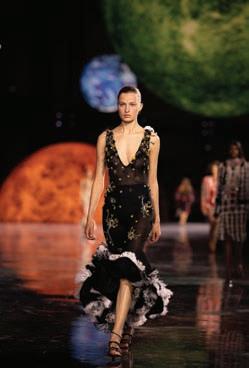
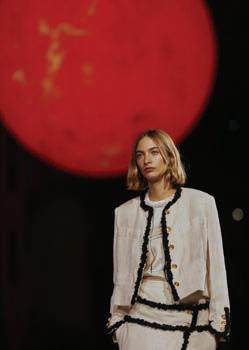
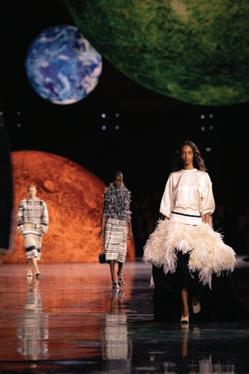


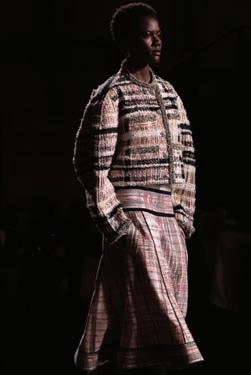
Evening brought an otherworldly beauty. Dresses flowed like constellations under the planetary dome, their draped silks and handpainted petals suggesting motion and memory. Jewellery was lavish yet ethereal, baroque pearls, enamelled chains, and glass planets orbiting the wearer with luminosity. Shoes, with their familiar contrasting toe-caps, were designed to propel.
The show perfectly embodied Gabrielle Chanel’s paradox: strength conveyed through softness, and pragmatism turned alluring. “There is no time for cut-and-dried monotony. There is a time for work. And a time for love,” she once said. “That leaves no other time.” Blazy appeared to respond across a century, proposing a new kind of universal wardrobe, fluid, borderless, and free.
In his first collection for Chanel, Matthieu Blazy achieved something exceptional, the bravery to redefine an icon not by reinventing it, but by truly understanding it. The result felt less like a debut and more like the start of an inspiring, ongoing conversation.
All photography © CHANEL.
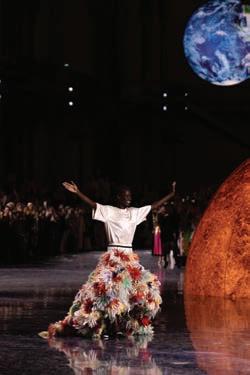
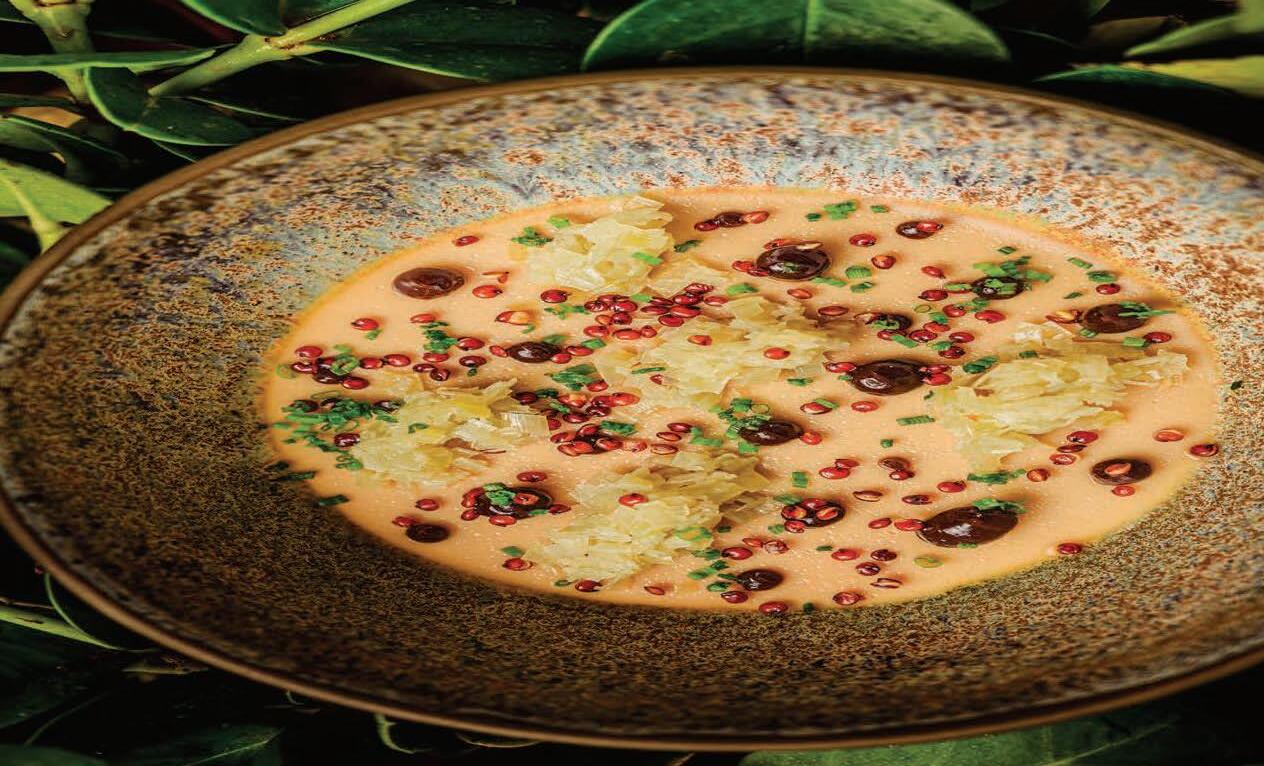

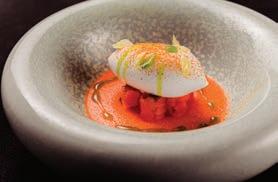



Housed in a century-old Balluta palazzo, run by The Xara Collection, Rosami redefines fine dining. Led by new Executive Chef Davide Marcon and Head Chef Alan Tabone, Rosami celebrates fresh, garden-sourced ingredients and creativity through Malta’s only Carte Blanche tasting menu, a unique approach that invites guests to embrace the magic of the unknown and indulge in a true culinary adventure. Located just beneath, OKA’s starts a new chapter with a new thoughtfully curated menu that pays homage to the culinary excellence of Rosami, while crafted for relaxed enjoyment amid elegant surroundings.
www.xaracollection.com
Rosami and OKA’s At The Villa
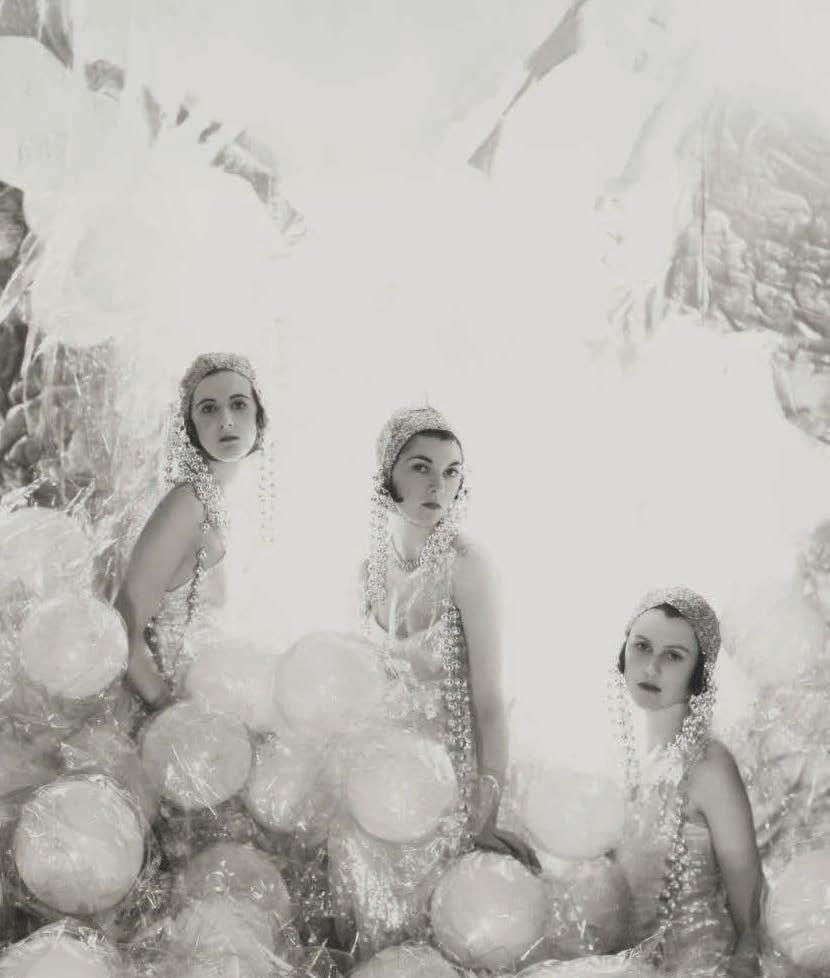
In collaboration with

7 NOVEMBER - 7.30PM
9 NOVEMBER - 4.00PM
TEATRU MANOEL, VALLETTA
e Valletta Early Opera Festival is inviting you to two rarely performed operas this November.
Hundreds of years ago, Teatru Manoel was the principal venue where the Knights of the Order of St John gathered for commedia dell’arte and other theatrical forms, including opera, that were fashionable during their time in Malta. Today, audiences continue to flock to the theatre, with thousands of visitors each year drawn to its historic architecture and eclectic programme.
Directed by Brett Nicholas Brown and conducted by Mro Giulio Prandi, Festivals Malta and Teatru Manoel present the third edition of the Valletta Early Opera Festival on the 7th and 9th November. The first two editions focused on Mozart’s early operatic works—Apollo et Hyacinthus and Il Re Pastore. This year, the spotlight shifts to two compositions by Christoph Willibald Gluck, with librettos by Pietro Metastasio: Il Parnaso Confuso and La Corona
These works have a distinctive staging history. Rather than being created for professional performers, they were celebratory pieces written for the House of Habsburg and originally performed by archdukes and archduchesses.
First staged at the royal court of Schönbrunn in Vienna, Il Parnaso Confuso (“Parnassus in Turmoil”) is a comedic azione teatrale. In the opera, Apollo—the Greek god of music and poetry—summons the muses Melpomene, Euterpe, and Erato to prepare for the wedding of Holy Roman Emperor Joseph II and Maria Josepha of Bavaria. Disagreements and playful squabbles among the muses give rise to a witty one-act delight.
In this production, Il Parnaso Confuso is reimagined against the backdrop of the roaring Twenties, drawing inspiration from Cecil Beaton’s portraits of the ‘Bright Young Things’, the decade’s ‘Egyptomania’, and Alexander Stirling Calder’s ‘Star Maiden’.
La Corona, meanwhile, explores a chapter from Greek mythology: the Calydonian boar hunt. This reinterpretation, inspired by the utilitarian fashions of the 1940s, offers a striking contrast to Il Parnaso Confuso. Unlike its companion piece, La Corona was never performed at Schönbrunn. Commissioned to celebrate the name day of Emperor Francis I on October 4, 1765, it was shelved after the Emperor’s death that August.
The wartime-inspired staging underlines themes of resilience and collective struggle. The pared-back aesthetic of 1940s dress allows the music and myth to shine, while evoking a period when communities had to confront hardship with ingenuity and solidarity. For today’s audiences, the opera will be offering a glimpse into how art can celebrate courage in the face of uncertainty, linking ancient legend, Enlightenment ideals, and twentieth-century history in one compact, poignant work.
And now as the Autumn light settles over the Maltese Islands, you’re invited to join in for this unique opportunity to witness a carefully curated experience. Opera awaits you at the majestic Teatru Manoel. Visit www.festivals.mt/veof for more information and to secure your seats.
BRINGING IMPORTANT LITERATURE TO A MALTESE READERSHIP
Founded in 2011 by Joanne Micallef, Faraxa Publishing publishes literary and non-literary translations into Maltese, as well as original titles in various genres. We champion authors and translators by giving their writing a home, and giving them a platform to share their work with local readers and beyond. We are a bilingual company, publishing books both in Maltese and English –and occasionally even other languages – as we believe that literature should have no borders or barriers.
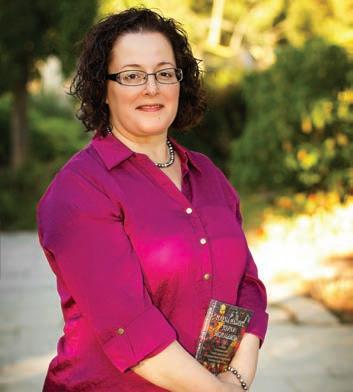
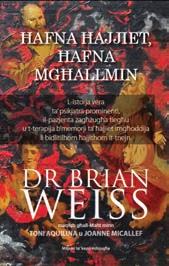
Joanne Micallef founded Faraxa Publishing with the aim of bringing important literature to a Maltese readership. During a difficult period in her life, she stumbled across Brian L. Weiss’s book “Many Lives, Many Masters”. Inspired by its deep psychological and spiritual value, Joanne undertook the task of translating it into Maltese. “Ħafna Ħajjiet, Ħafna Mgħallmin” became Faraxa‘s debut publication, as well as the first book in the Faraxa Translation Series. Fourteen years later, Joanne is striving to keep building on all that Faraxa has done so far, with plans to expand both locally and internationally.
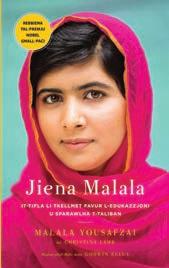

The Faraxa Translation Series, overseen by Professor Anthony Aquilina, has filled a void which had been felt for years. Since 2011, it has been bringing to the Maltese literary scene exceptional works of translation in a wide array of genres. Through this series, Faraxa has introduced writing styles that had never been seen before in the Maltese language, such as the stream-ofconsciousness style, as well as prioritised both classic publications (such as the works of Albert Camus and Franz Kafka) and modern works (such as Malala Yousafzai).
Waqt (Chwila / Moment) is a book of poems by Wislawa Szymborska, winner of the 1996 Nobel Prize for her ‘ironic preciseness’ in each of her poetry collections. Waqt is the twenty seventh translation of the Faraxa Translation Series.
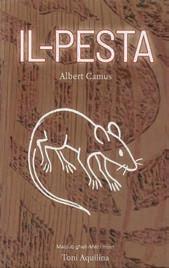
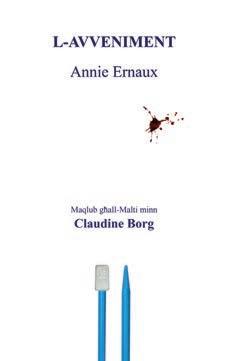
Translated by Claudine Borg, L-Avveniment brings Ernaux’s poignant narrative to Maltese readers.
2025 NATIONAL BOOK
L-Avveniment is the Maltese translation of Annie Ernaux’s powerful memoir, L'Événement. It recounts Ernaux's harrowing experience of an illegal abortion in 1963 France, reflecting on the personal, political, and societal implications of her story. Translated by Claudine Borg, this edition brings Ernaux’s poignant narrative to Maltese readers, offering a culturally relevant lens on universal themes. Annie Ernaux was awarded the Nobel Prize in Literature in 2022, and this translation gives Maltese readers access to her phenomenal work in their native tongue.


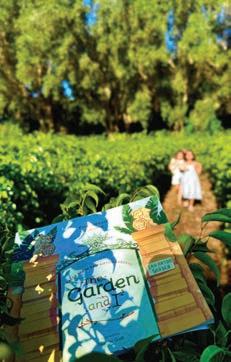
In The Garden and I, join a mother-and-daughter duo on their magical adventure through San Anton Gardens.
Meeting your favourite boy band just got dangerously complicated in this fast-paced young adult thriller by debut author Casey Sacco. “Back for You” follows Lexi as she discovers that her sister Kree is dating a member of her favourite boy band. But their worlds are further turned upside down when Kree’s maniacal ex, Jeremiah, reappears, willing to stop at nothing to get her back. Caught in a web of secrets and threats, Lexi must navigate newfound friendships and complicated feelings while trying to keep her sister safe. As Jeremiah’s obsession escalates, they all must band together to stop him once and for all.
Join a mother-and-daughter duo on their magical adventure through San Anton Gardens. Explore sparkling fountains, a winding maze, and meet the charming animals that call the gardens home. With a handy map to guide you, every pathway is a discovery. Perfect for children aged 3–7, this beautifully illustrated book is the start of a journey your little ones will want to take again and again.




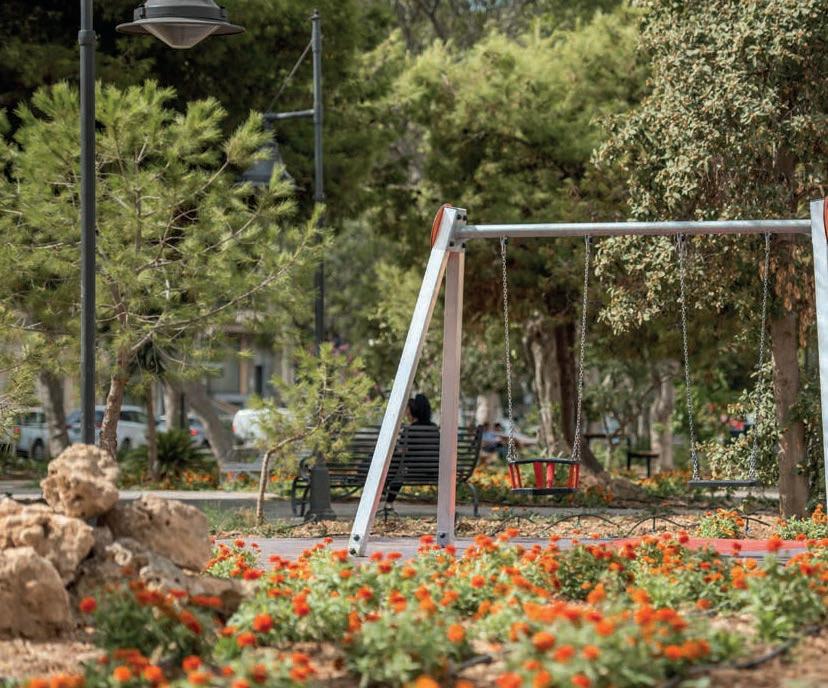





Photography courtesy Kamra tal-Periti.
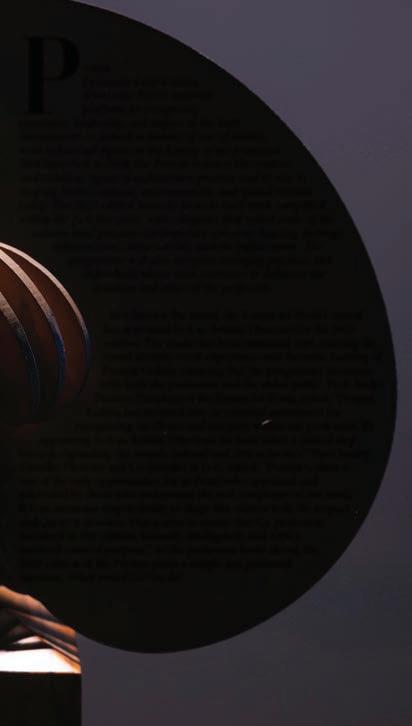
Premju Emanuele Luigi Galizia, Kamra tal-Periti’s national platform for recognising excellence, leadership, and impact in the built environment, is named in honour of one of Malta’s most influential figures in the history of the profession. First launched in 2018, the Premju honours the creative and technical rigour of architectural practice and its role in shaping Malta’s cultural, environmental, and spatial realities today. The 2025 edition turns its focus to built work completed within the past five years, with categories that reflect some of the nation’s most pressing contemporary concerns: housing, heritage, infrastructure, sustainability, and the public realm. The programme will also recognise emerging practices and individuals whose work continues to influence the direction and ethics of the profession.
In a first for the award, the Kamra tal-Periti Council has appointed I+A as Artistic Directors for the 2025 edition. The studio has been entrusted with curating the visual identity, event experience, and thematic framing of Premju Galizia, ensuring that the programme resonates with both the profession and the wider public. Perit André Pizzuto, President of the Kamra tal-Periti, noted: “Premju Galizia has matured into an essential instrument for recognising excellence and integrity within our profession. By appointing I+A as Artistic Directors, we have taken a critical step towards expanding the award’s cultural and civic relevance.” Perit Joeaby Vassallo, Director and Co-founder at I+A, added: “Premju Galizia is one of the only opportunities for us Periti to be appraised and celebrated by those who understand the real complexity of our work. It is an immense responsibility to shape this edition with the respect and clarity it deserves. Our goal is to ensure that the profession sees itself in this edition, honestly, intelligently, and with a renewed sense of purpose.” As the profession looks ahead, the 2025 edition of the Premju poses a simple and profound question: What would Galizia do?

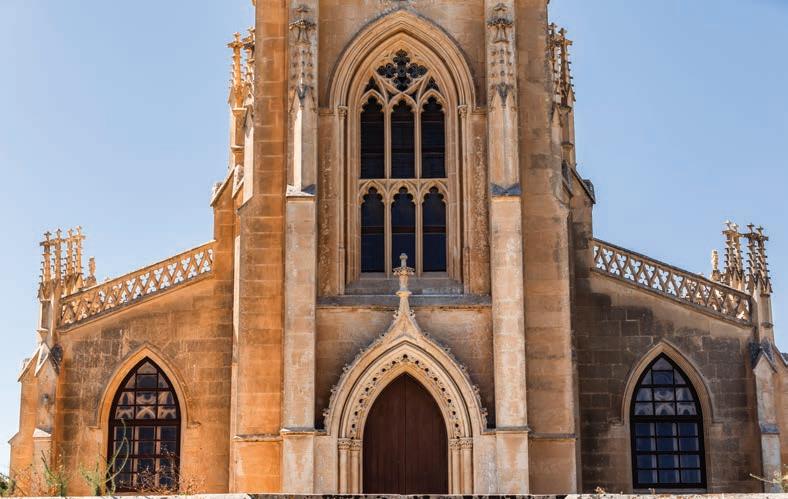
From the spire of Addolorata Cemetery to the domes of Marsa’s Turkish Cemetery, Emanuele Luigi Galizia shaped 19th-century Malta with vision and discipline, leaving behind an architectural landscape defined by craft, faith, and civic ambition.
Photography Jean Marc Zerafa for Kamra tal-Periti.
This page: Addolorata Cemetery.
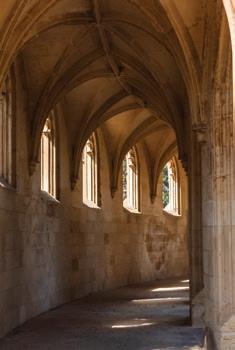
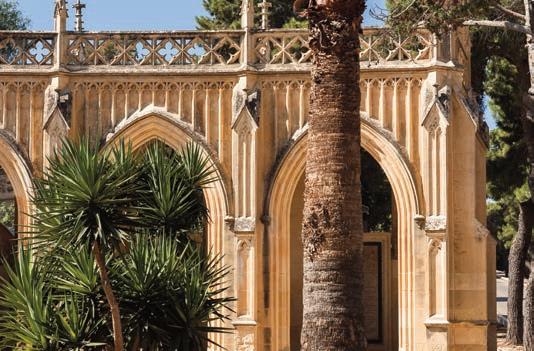
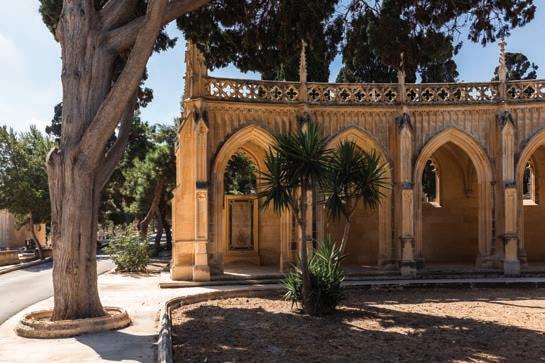
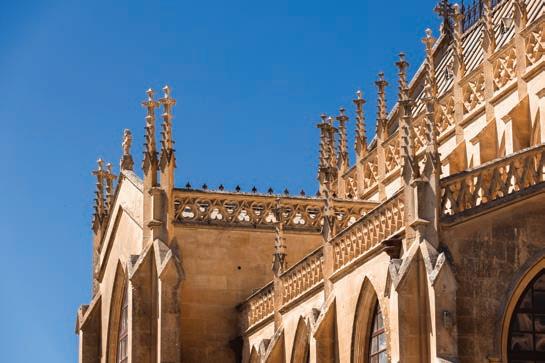
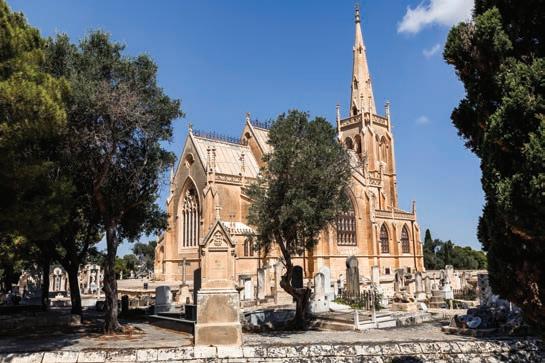
Emanuele Luigi Galizia (1830–1907) holds a unique role in Maltese architectural history, shaping the island’s civic and spiritual landscape during the 19th century. As Superintendent of Public Works, he led a transformative era that blended British administration with a Maltese identity carved in stone. With training as both a civil engineer and architect, Galizia combined technical expertise and cultural insight, leaving behind a legacy that still defines Malta’s architectural character. One of his most celebrated projects, the Addolorata Cemetery, is a masterpiece of haunting beauty. Designed in the 1860s and set on Tal-Ħorr hill, it transformed a site long associated with burial into one of Malta’s greatest architectural landmarks. Galizia’s Neo-Gothic style blends solemnity and elegance, with the Chapel of Our Lady at its centre, its tall spire visible for kilometres through the surrounding trees. Completed in 1868 and opened in 1869, the cemetery was intended as a modern civic necropolis, its spatial hierarchy and formal vocabulary inspired by northern European models, yet adapted to Maltese light and stone.
This page: Addolorata Cemetery.
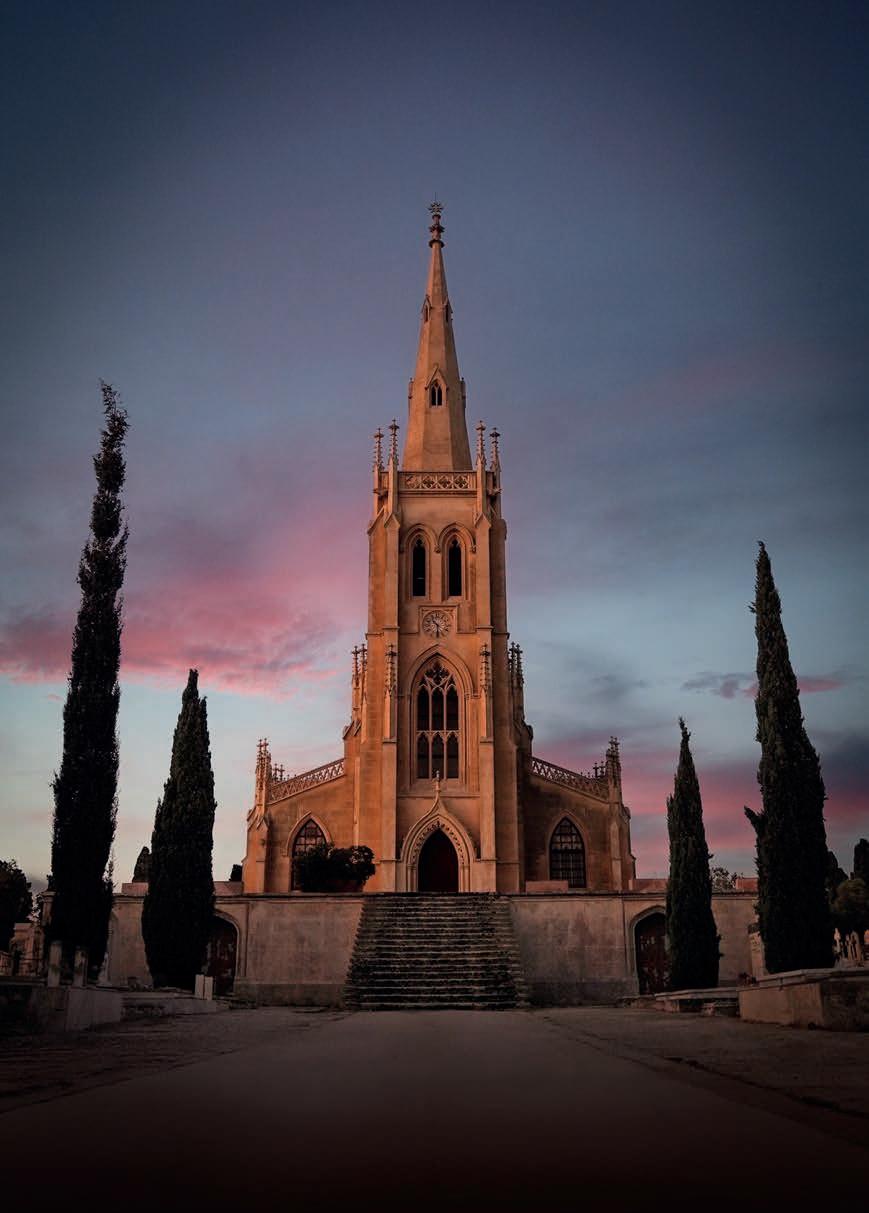
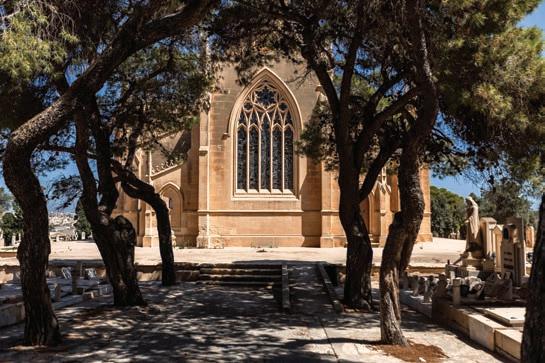
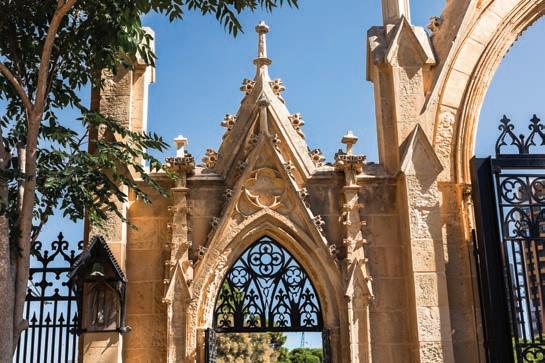

Time has layered the Addolorata with sculpture, marble, and bronze, creating a city of the dead that mirrors the artistry of the living. Over the decades, its avenues have filled with mausoleums, memorials, and statuary, showcasing local craftsmanship and evolving taste. A major restoration completed in late 2024 revived this vision with exceptional care. The five-year project, overseen by the Foundation for Medical Services, addressed the site as an ensemble, restoring not only the Chapel of Our Lady of Sorrows, but also the gateways, chapels, arcades, and ancillary buildings that compose its intricate landscape. The Neo-Gothic entrances, symbolic thresholds to the cemetery, were returned to their original condition through meticulous stone and cast-iron conservation. In addition to stonework, significant interventions were made on the cast iron components of the gates. The missing parts were recreated by making molds from the original sections of the gates and casting them. These pieces were carefully crafted and seamlessly reintegrated into the structure, bringing the gates back to their original look. Inside the chapel, a delicate timber and zinc roof structure, a feat of 19th-century engineering, was stabilised and retained, its layered design allowing the building to breathe while preserving the decorative plaster ceiling below. Work was also carried out on the Arcade of Tablets, ensuring its historical and architectural significance was preserved. The restoration efforts extended to the Gatt Chapel, the Exedra, the fountain, the Gibbet, the Sette Giugno Monument, and other monuments. The restoration as a whole affirmed the site’s role as both sacred architecture and national monument, ensuring that Galizia’s design continues to move visitors as it did over a century and a half ago.
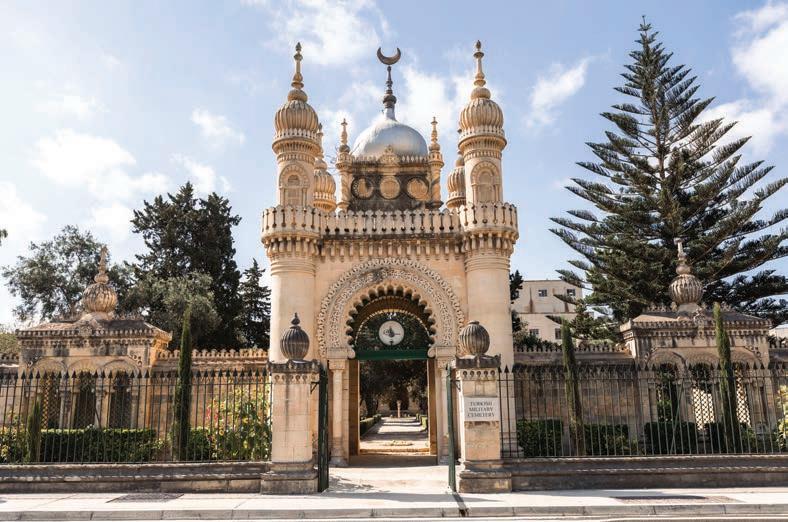
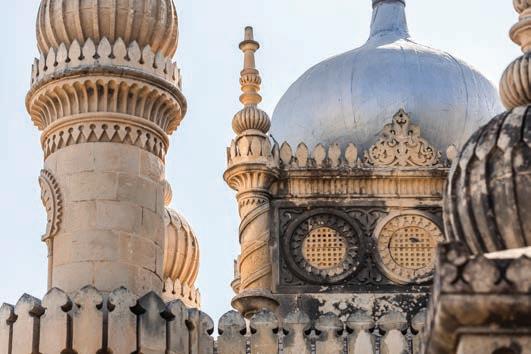
The same synthesis of symbolism and structure defines Galizia’s other major works. The Turkish Military Cemetery in Marsa, commissioned by Sultan Abdülaziz and completed in 1874, introduced an exotic Orientalist language unprecedented in Maltese architecture. Its
domed forms and arabesque detailing honoured Islamic tradition while revealing Galizia’s ability to interpret diverse cultural aesthetics with sensitivity. The project earned him the Order of the Medjidie, an honour he wore alongside the Order of St Gregory the Great, a pairing that encapsulated his refusal to be defined by sectarian boundaries.
In Valletta, his Victoria Gate remains one
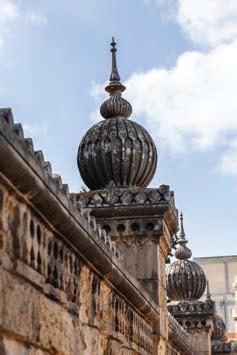
of the city’s most photographed landmarks. Completed in 1885 to replace the earlier Del Monte Gate, it provided a grand entrance from the busy Grand Harbour area into the fortified capital. Galizia’s design balanced functional modernity with ceremonial presence, reflecting the architectural ambitions of the British colonial administration and Malta’s growing urban sophistication.
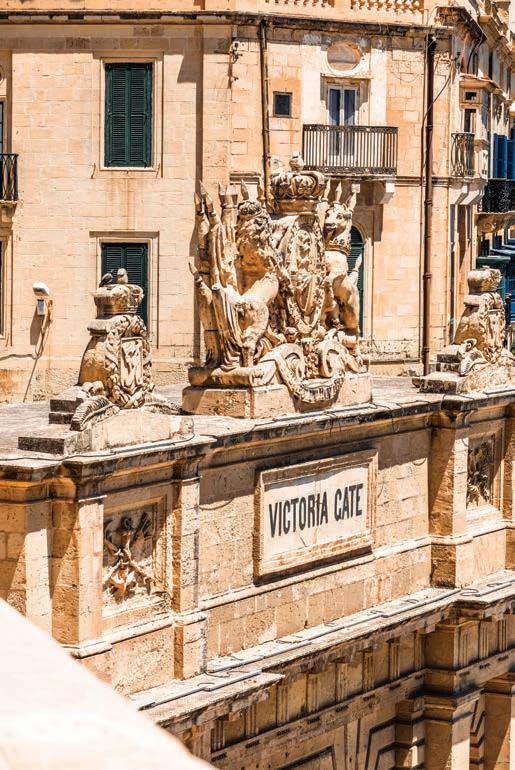
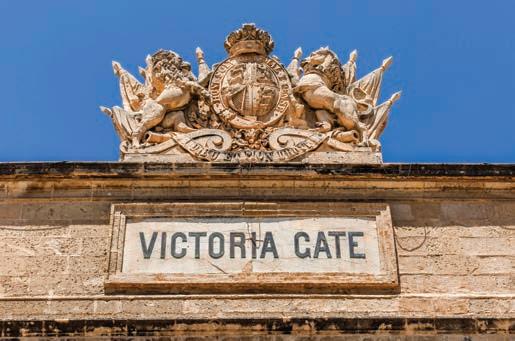
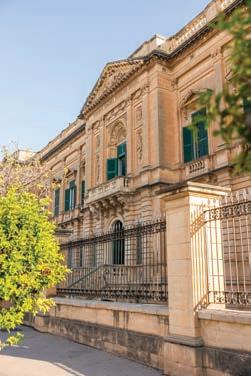
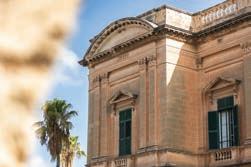
By the late 1800s, his architectural language had matured, and for the Vincenzo Bugeja Institute in Santa Venera he turned towards a French Classical style, favouring proportion and restraint over the ornament of his earlier NeoGothic phase. Commissioned by the philanthropist Marquis Vincenzo Bugeja, the institute combined elegance with social purpose, a building dedicated to technical education and civic progress. Perhaps his most personal creation was Villa Alhambra in Sliema, his own summer residence. Completed in the 1880s, the villa merges Moorish and Mughal motifs with Maltese craftsmanship, its façade a lively play of arches and ornament set against the Mediterranean sky. Inside, Victorian and Baroque influences intertwine, revealing an architect who viewed design as a dialogue between cultures rather than a single stylistic allegiance.





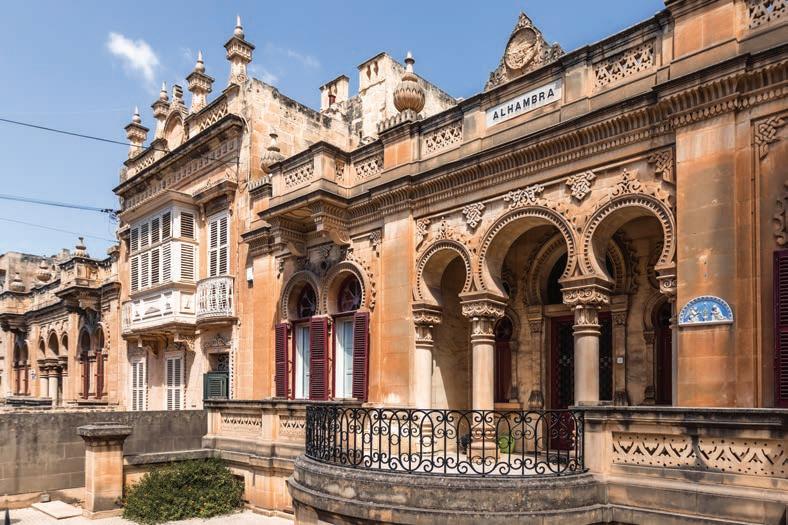
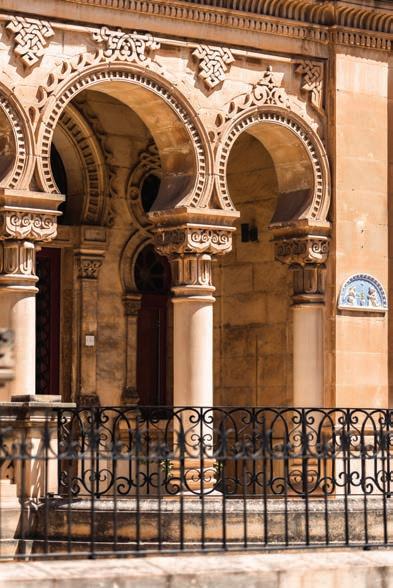
Throughout his career, Galizia’s approach was marked by integrity and discipline. Fluent in Italian and English, he moved easily between British and Maltese spheres, applying his technical training to projects that shaped the island’s infrastructure and public life. He entered government service as a young apprentice to William Lamb Arrowsmith in 1846 and rose through the ranks to become Superintendent of Public Works in 1880, a role that also granted him a seat on Malta’s Legislative Council.
Galizia’s impact lives on through the buildings that carry his name and the professional values he upheld, rigor, restraint, and a steadfast belief in architecture’s public value. His creations reflect a time when Malta was navigating its identity between empire and modernity, faith and progress, memory and ambition. These structures remain timeless expressions of craftsmanship and conviction, continuing to shape the island’s architectural conversation well into the 21st century.



Sagħtar – ir-rivista popolari bil-Malti għat-tfal, iż-żgħażagħ u l-adulti – hija ppubblikata kull xahar minn Ottubru sa Mejju! 56 faċċata ta’ artikli informattivi, stejjer interessanti, poeżiji, logħob u kompetizzjonijiet bi premjijiet sbieħ.
Idħlu www.saghtar.org.mt għal iktar informazzjoni u biex tabbonaw online.
Sagħtar – the well-renowned Maltese magazine for children, youths and adults – is out every month from October to May! 56 pages of interesting stories and information, poems, games and competitions with exciting prizes.
Visit www.saghtar.org.mt for more information and to subscribe online.




























































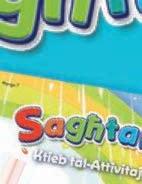























































































































Sagħtarin – il-ktieb tal-attivitajiet għat-tfal tas-snin bikrin – joħroġ kull xahrejn bejn Novembru u Mejju. Jinkludi qari ħafif, tpinġija, logħob u ħafna iktar.















Idħlu www.saghtar.org.mt għal iktar informazzjoni u biex tabbonaw online.

















Sagħtarin – the activity book for young readers – is issued bimonthly between November and May. It includes simple reading, drawing and colouring activities, games and much more.











Visit www.saghtar.org.mt for more information and to subscribe online.



























































































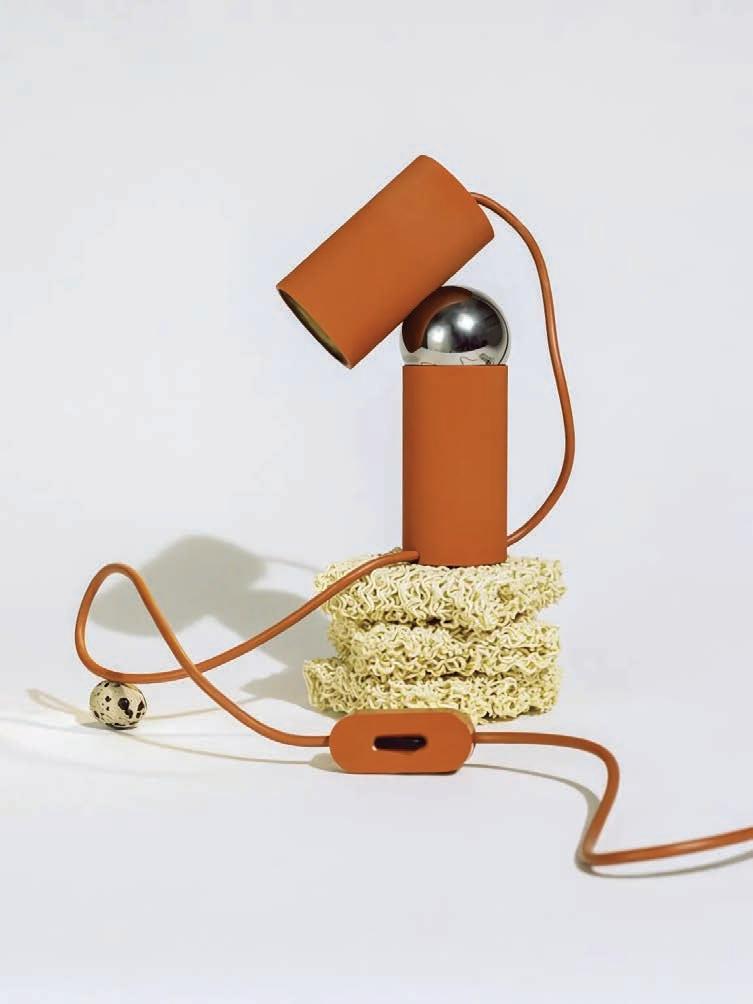


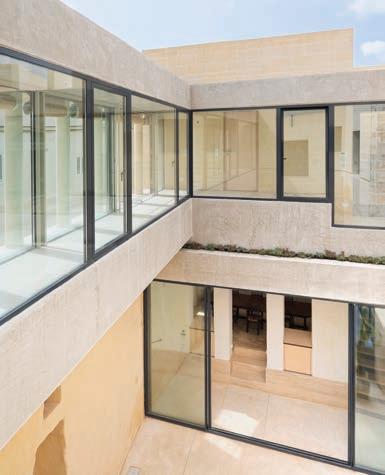
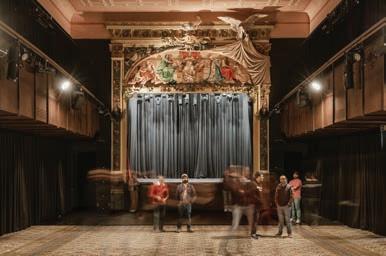
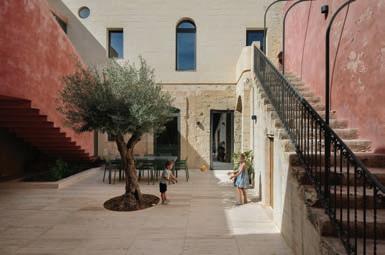
ADAPTIVE RENOVATION AWARD This award honours projects that transform historic buildings with care and clarity providing them with a new lease of life through a carefully crafted and sensitive design programme that incorporates international best practice in heritage conservation. Projects must demonstrate architectural sensitivity, legibility of the original structure, and meaningful integration of new uses, systems, and materials.
TEATRU SALESJAN, SLIEMA. LEAD PERIT/I: CHRIS BRIFFA ARCHITECTS.
Teatru Salesjan has served as the community hub for the performing arts in Sliema for years, but a sensitive refurbishment has renewed its purpose. Uniting a careful restoration of its long, storied legacy, and the installation of new lighting, acoustics, and HVAC systems, this blend of past and contemporary use is a strong demonstration that historic buildings can evolve while retaining their heritage.
DAR IT-TARAĠ, NAXXAR. LEAD PERIT/I: PERITI STUDIO.
An 18th-century farmhouse in the centre of Naxxar, Dar it-Taraġ had been abandoned for over 50 years, but retained significant heritage elements, such as stone ceilings, xulliel walls, and a large mill room. Through careful restoration and the implementation of new structural, mechanical, and environmental systems, Dar it-Taraġ was reinvented as a modern family home that blends its past with contemporary comfort.
DAR SAN ROKKU, ŻEBBUĠ. LEAD PERIT/I: VALENTINO ARCHITECTS.
Originally a 16th-century heritage building, Dar San Rokku has been converted into a three-bedroom home with a colonnaded walkway spanning an expansive inner courtyard and Triq Il-Kbira in Zebbug and a facade extension inspired by the Mediterranean loggia.
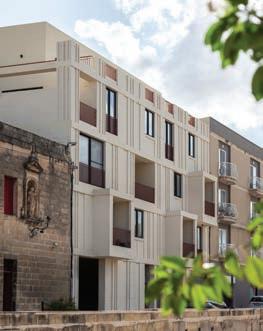
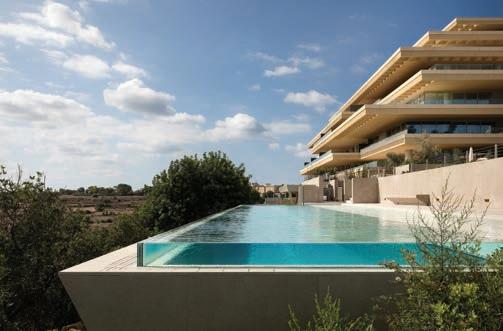
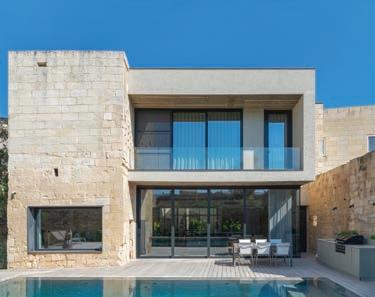
Above left: Multi-Unit Residential Design Award Finalist. Vale Residences, Qormi.
Photo © Borg Bonaci Architecture.
Above right: Multi-Unit Residential Design Award Finalist. The Verdala Terraces, Rabat, Malta.
Photo © Ramon Portelli.
Left: Single Dwelling Design Award Finalist. Ħal Mula Townhouse, Żebbug. Photo © Alex Attard.
Right: Single Dwelling Design Award Finalist. Dar iċ-Ċitru, Żebbug. Photo © Ramon Portelli.
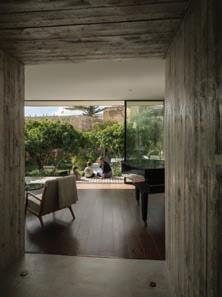
MULTI-UNIT RESIDENTIAL DESIGN AWARD This award addresses Malta’s densification crisis by showcasing multi-dwelling housing that engages façade design, carbon-neutrality, urban contribution, and dwelling dignity. It sets a public benchmark for how mass housing in Malta should be.
VALE RESIDENCES, QORMI.
LEAD PERIT/I: BORG BONACI ARCHITECTURE.
The restoration of a traditional vernacular residence, this project incorporates a contemporary architectural intervention within the structural characteristics of the residence. By introducing a central core within the newer part of the development to serve as a transition between existing and new levels.
THE VERDALA TERRACES, RABAT, MALTA. LEAD PERIT/I: C&K ARCHITECTURE.
Composed of three fragmented blocks, Verdala Terraces pushes the boundaries of structural limitations by implementing post-tensioning technology to cantilever large slabs, creating an interplay between openness and privacy. Designed as part of the Verdala Wellness Hotel, Verdala Terraces places user need at the centre of its spatial experience.
SINGLE DWELLING DESIGN AWARD Honouring Malta’s evolving domestic architectural identity, from villas and terraced houses to conversions of historic townhouses. This award focuses on spatial invention, materiality, tactility, and how architecture shapes everyday living through structure, detail, and tone.
DAR IĊ-ĊITRU, ŻEBBUĠ.
LEAD PERIT/I: VALENTINO ARCHITECTS
Set within the urban conservation area of Żebbuġ, Dar Iċ-Ċitru reimagines a vernacular Maltese townhouse through subtle internal reconfiguration and a contemporary addition. The project balances heritage conservation with architectural intention and places a mature citrus garden at the centre of the home’s experience. The project transforms a once-disjointed dwelling into a cohesive, contemplative environment where heritage and landscape are placed at the centre of family life.
ĦAL MULA TOWNHOUSE, ŻEBBUĠ.
LEAD PERIT/I: A COLLECTIVE
This 18th-century townhouse, modestly presented as a single-storey dwelling along a narrow alley in the historic core of Żebbuġ, conceals a sequence of layered spaces behind its restored façade and teal apertures. At the time of commission, the property was severely dilapidated, its garden overgrown and used solely to house livestock. An existing planning permit allowed extensive demolition behind the façade; however, the design approach sought instead to preserve as much original fabric as possible.
DAR IT-TARAĠ, NAXXAR.
LEAD PERIT/I: PERITI STUDIO. Also nominated for the ADAPTIVE RENOVATION AWARD.



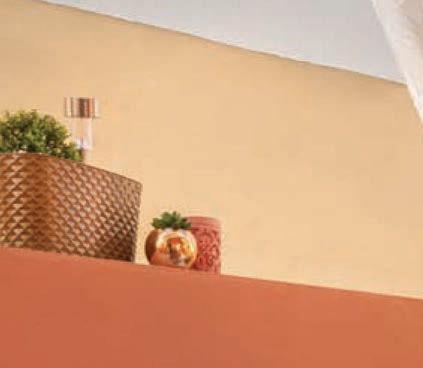



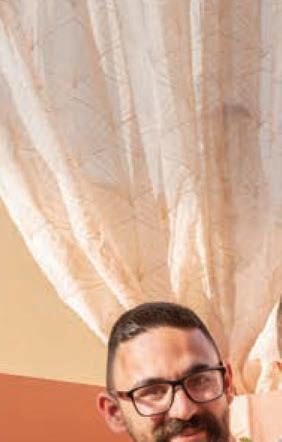






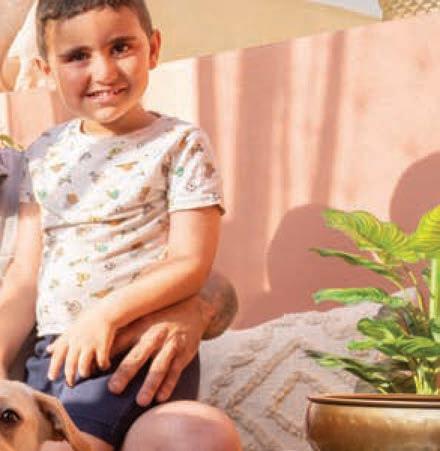
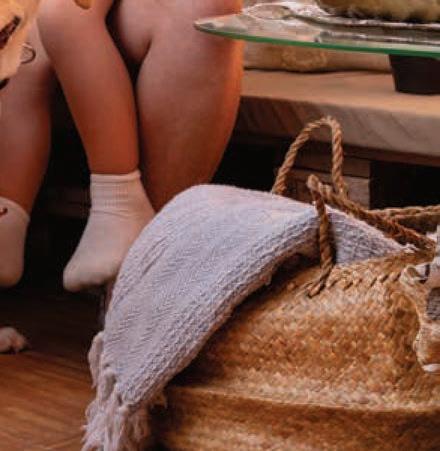
“We chose this copper colour for the terrace because we find it relaxing and feel that it has a Mediterranean vibe that fits well with the space. My partner and I did everything ourselves over three days, from choosing the colour and painting the walls to setting up and decorating it as a cosy barbecue area where we look forward to hosting family and friends a lot this summer!
Dylan Agius


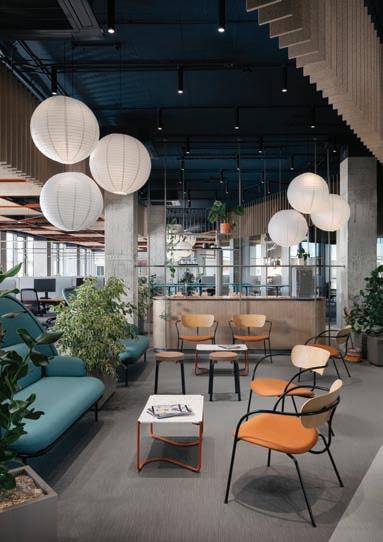
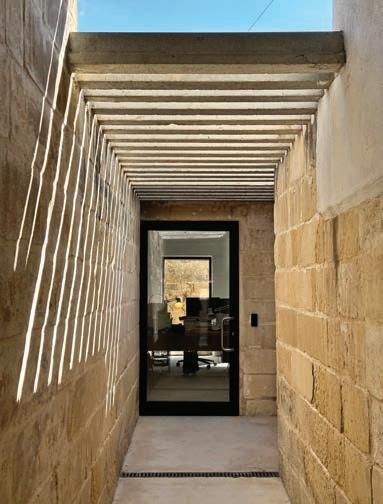
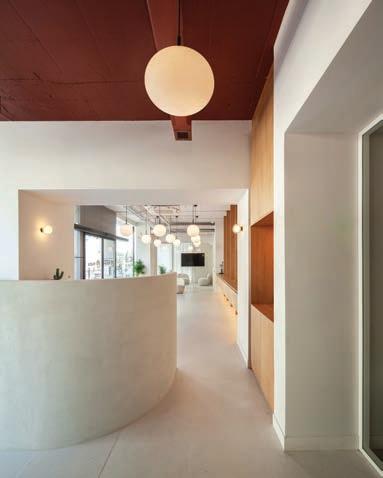
WORKPLACE DESIGN AWARD
Recognising high-quality workspaces, from offices to studios to factories, designed for wellbeing, focus, and adaptability. This category rewards clarity in function, comfort in atmosphere, and excellence in spatial and material design.
CLA MALTA OFFICE, MSIDA.
LEAD PERIT/I: PERIT JAMES DINGLI, PERIT MARK CAUCHI, PERIT VALENTINA VELLA FALZON.
This project involved a complete transformation of a 700sqm workspace, creating an environment with light and clarity at the centre of its function. Prioritising human experience, the project reworked the layout into private, semi-private, and public zones, with furniture selected to maximisepersonalisation and enabling employees to make their designated space feel more approachable and comfortable.
GO CAMPUS, ŻEJTUN.
ARCHITECTURAL DESIGN: AP VALLETTA.
Conceived as a model for future workplaces, the GO Campus in Bulebel includes five blocks. Pixellated facades on two levels create a brise-soleil system that reduces energy consumption and provides an optimal working environment, while high level bridges connect the blocks at several levels, encouraging social interaction.
ARCHITECT’S WORKSHOP, MARSA.
LEAD PERIT/I: MODEL, MODEL.
Built within a former carpenter’s warehouse, this project is an open-plan office drawing inspiration from Maltese vernacular architecture, with a traditional Maltese door and a Mediterranean garden that runs the length of the office building. Later additions were removed to maintain visual clarity, with the garden reinstated to serve as a central function of office life.
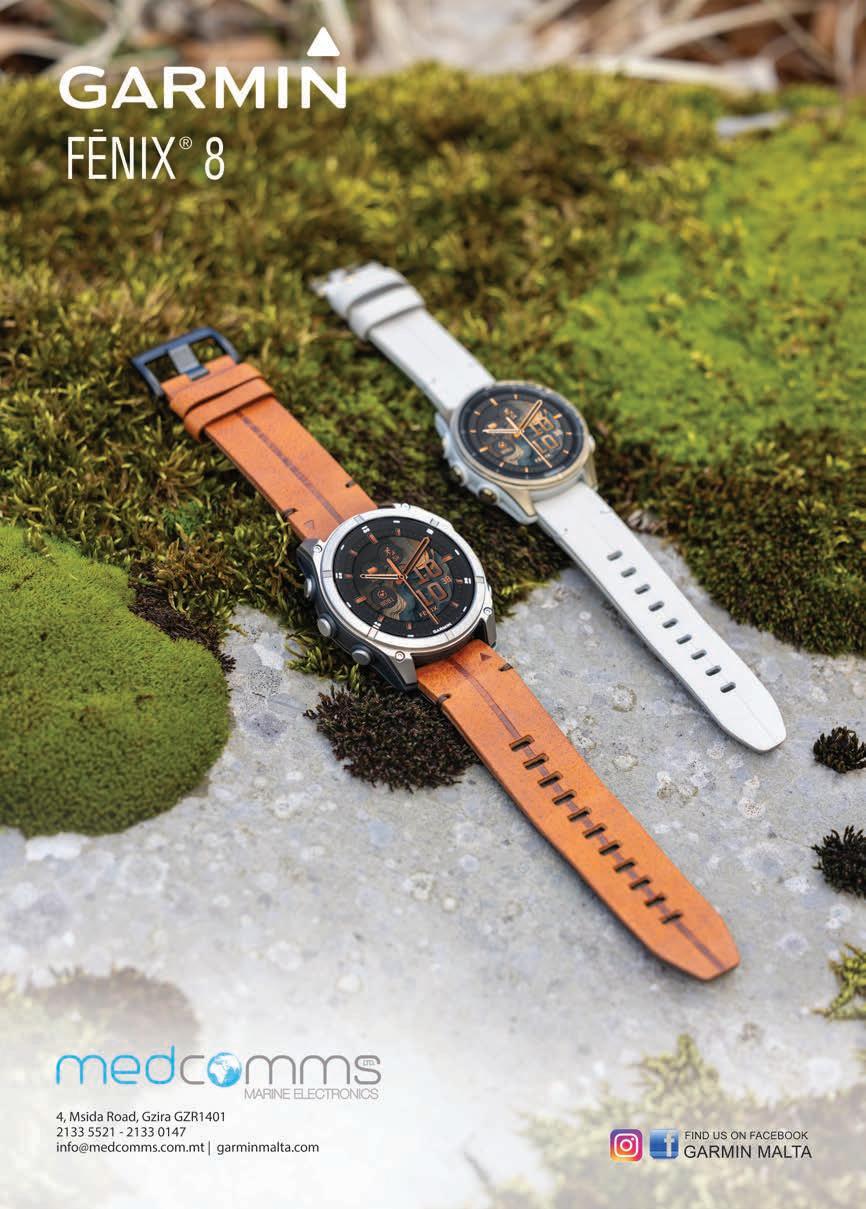
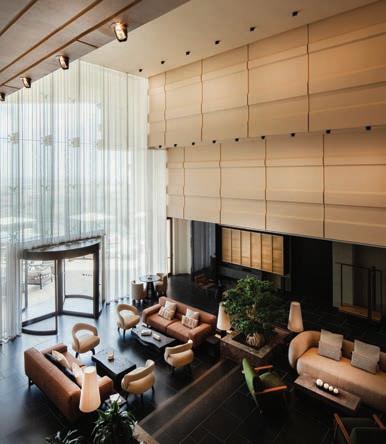
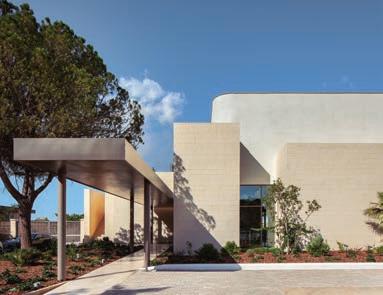
DESIGN AWARD
Celebrating projects in Malta’s growing tourism landscape, from boutique hotels to restaurants and wellness spaces. These are projects that shape the visitor experience through spatial richness, materiality, detailing, and atmosphere. Whether heritage-based or newly built, hospitality is understood as spatial storytelling.
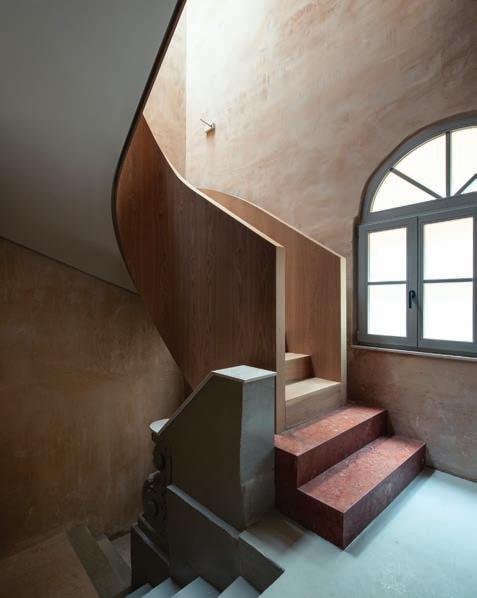
THE VERDALA WELLNESS HOTEL & SPA, RABAT, MALTA. LEAD PERIT/I: C&K ARCHITECTURE.
A new entrant in the Maltese hospitality landscape, Verdala Wellness Hotel seeks to embody the richness of the wellness experience and crafts a space defined by a nuanced material palette featuring granite, marble, plaster, and wood. Created to curve along the landscape and embody both the solid townscape outside its entrance to the notched facade echoing the Maltese geology.
VIP TERMINAL, MALTA INTERNATIONAL AIRPORT. LEAD PERIT/I: VALENTINO ARCHITECTS.
A separate entity to the main terminal experience, the VIP terminal at Malta International Airport has historically been reserved for commercial important persons and ministerial and diplomatic use. Its restructuring and renovation focused on creating a strong sense of time and place through textural and elemental architecture, while maintaining a comfortable experience.
STILLA SAN LAZZRU GUESTHOUSE, BORMLA. LEAD PERIT/I: VALENTINO ARCHITECTS.
The first of a pioneering albergo diffuso concept in Malta, Stilla San Lazzru introduces new hospitality typologies to Malta through careful spatial interventions. Working within a heritage dwelling, the design focuses on making use of general ceiling heights for split-level arrangements and an expanded internal volume.



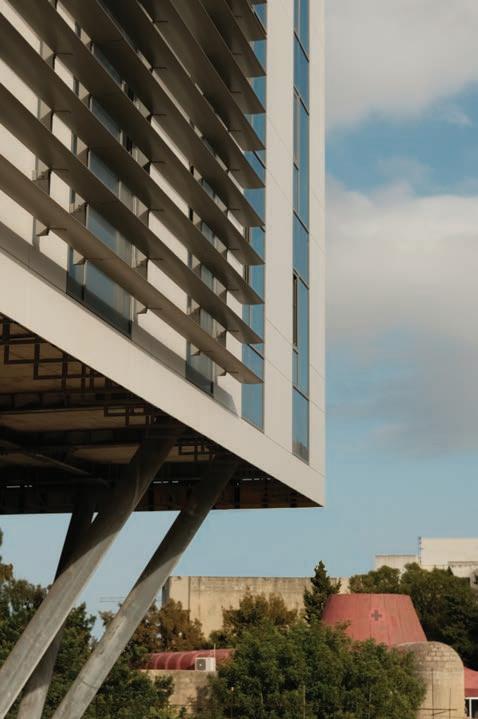

This award recognises the role of engineering in advancing the quality, safety, and sustainability of Malta’s built environment and enhances the quality of life of its inhabitants. It honours works that address complex technical challenges through engineering rigour and a civic purpose. Whether visible or discreet, these interventions enhance the resilience and functionality of the spaces we inhabit.
OF MALTA.
LEAD PERIT/I: PERIT ALEX TORPIANO.
The Sustainable Living Complex (SLC) in Msida represents a bold reimagining of how engineering innovation can shape Malta’s future built environment. Conceived as a landmark for interdisciplinary collaboration, SLC integrates advanced structural systems, sustainable strategies, and cutting-edge research facilities into a cohesive whole, setting a national benchmark for resourceefficient, high-performance buildings.
LEAD PERIT/I: PERIT DR PIERRE FARRUGIA/EBD SOLUTIONS.
The Voco Bridge demonstrates how engineering ingenuity can transform urban circulation. Commissioned as part of the Eden Leisure Group’s redevelopment of the Voco Hotel in St Julian’s, the bridge connects three distinct destinations. The structural form is a circular tubular steel truss, chosen for its ability to distribute forces efficiently while maintaining an elegant, lightweight appearance.
EMERGING PRACTICE AWARD
This category is intended to give recognition to the younger members of the profession, by awarding their body of work, ethos and organisational capacity. Finalists include: EBEJER BONNICI, AMANCHE ARCHITECTURE, and 3DM ARCHITECTURE.
This award celebrates unrealised projects that reflect strong architectural or spatial thinking. These may include conceptual projects including, but not limited to, noncommissioned design studies, or competition entries that were not implemented. The emphasis is on conceptual clarity, design resolution, and relevance to Malta’s built context and challenges. Finalists include: FORGOTTEN STORIES, EVANS BUILDING, VALLETTA; DJAR TAT-TAFAL, MELLIEĦA;and SACRED HEART COLLEGE, SLIEMA.
Other awards include the Galizia Leadership Award, Lifetime Achievement Award, and the President’s Award for Best Overall Project.














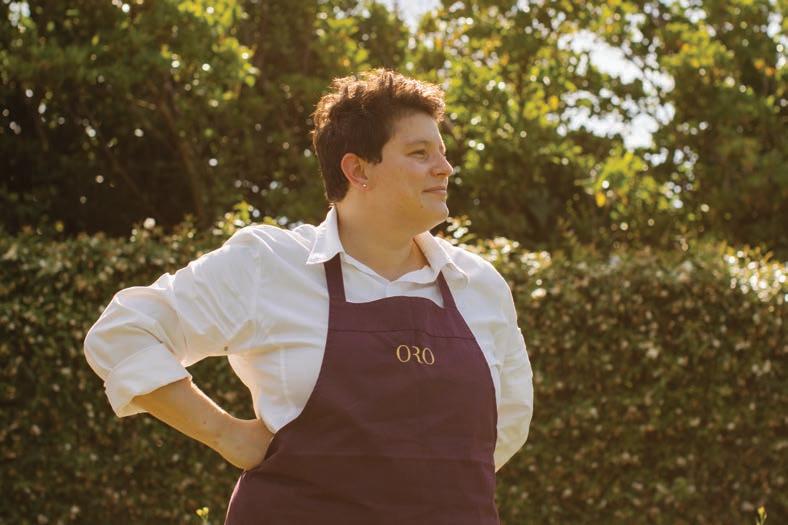
At Oro, the Michelin-starred restaurant at Venice’s Hotel Cipriani, A Belmond Hotel, Head Chef Vania Ghedini reimagines Venetian tradition, blending memory and seasonality beneath a golden dome. Her dishes trace the rhythm of the lagoon, infused with Massimo Bottura’s creative vision and her own instinct for storytelling through the flavours of Venice, Emilia-Romagna and beyond. Situated on the stunning Giudecca Island with views over the Venetian lagoon, the hotel is only a short fiveminute boat journey by complimentary shuttle from St. Mark's Square and can be easily accessed via a private boat from anywhere in Venice.
Photography courtesy Belmond.
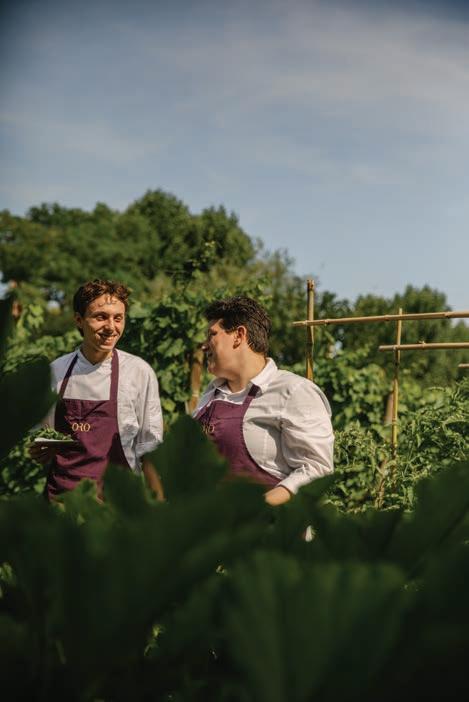
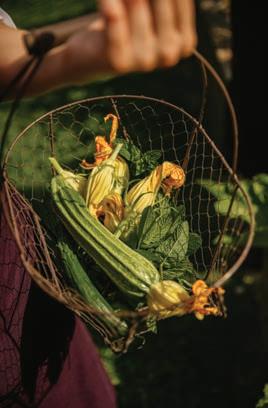
In Venice, where beauty and a sense of discoveryseems inevitable, Chef Vania Ghedini has found her rhythm in gently balancing tradition and modernity. Born in Ferrara and raised in her grandparents’ bakery, she learned early on that simplicity requires precision. “My cuisine is the continuity of culinary practices transmitted by great masters,” she says, “who taught me the value of this art and the importance of culture and knowledge.” At Oro, the Michelin-starred restaurant at Hotel Cipriani, A Belmond Hotel, Ghedini’s approach is reflected in dishes that honour Venetian heritage while embracing influences from beyond the lagoon.
Ghedini returned to Italy after five years in Marrakesh, where she worked with the Alajmo brothers at Sesamo. There, among spice markets and the pulse of Moroccan kitchens, she absorbed a deep respect for ingredients that speak for themselves. That influence now lingers at Oro, in harmonies of saffron, almond, and orange blossom, woven through the local language of the Veneto. Under the creative direction of Massimo Bottura, she has reimagined Venetian cuisine with a freshness that feels entirely her own. “Vania and I are excited to be part of this latest chapter,” Bottura says. “Restaurant Oro, with its stunning views out over the lagoon, is the present-day epitome of Cipriani’s journey.”
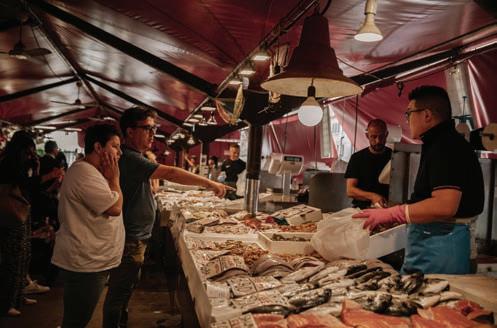

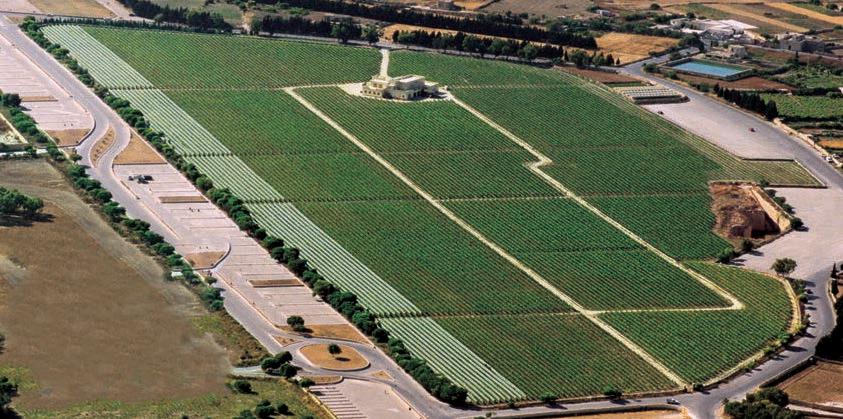

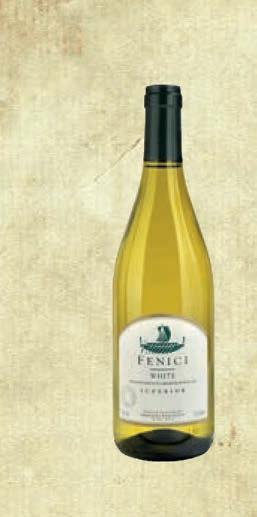









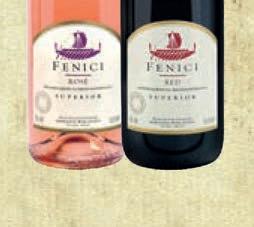












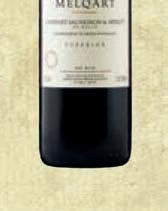







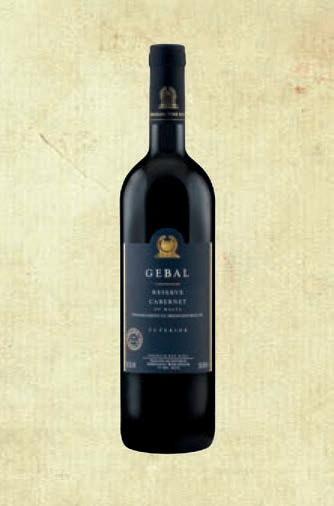


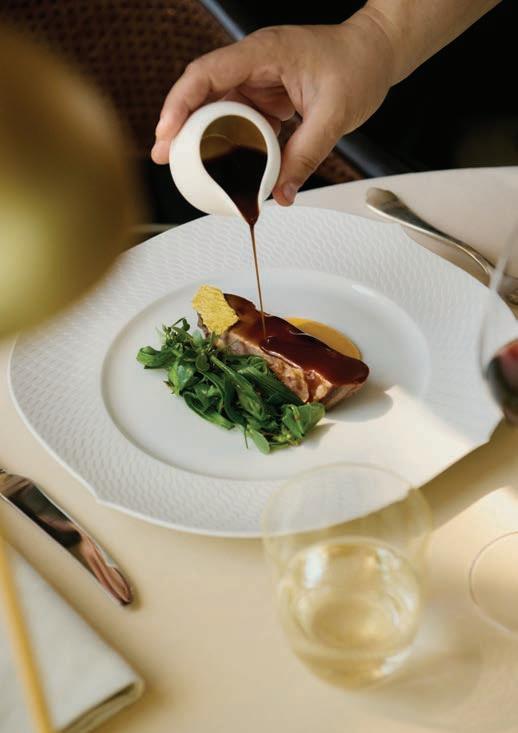

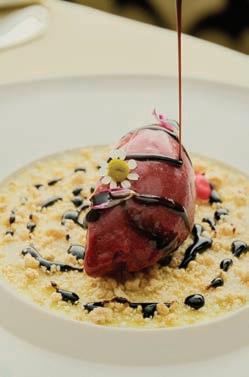
That journey began in 1958, when the hotel first opened on Giudecca Island as an escape, a place for the discerning few who sought Venice without its clamour. Today the spirit of that era lingers in Oro’s golddomed dining room, where the name itself, meaning “gold”, captures the soft gleam of evening light reflecting from the water across the lagoon. It is here that Ghedini has curated two remarkable seasons.
Chef Vania Ghedini elevates simplicity to an art form at ORO putting top-quality ingredients centre stage. Each dish on the 7-course tasting menu is a tribute to Venice and Veneto’s unique bounty.Her 2024 relaunch menu introduced delicate Moeche, a rare Venetian softshell crab, served with guanciale and squid ink zabaione, a dish that crossed sea and land with poised confidence. Seafood tortelli, shaped like rose petals in homage to a Moroccan pastry, fused Adriatic biodiversity with craftsmanship learned in her grandparents’ bakery. Risotto with nettles and semi-aged Morlacco cheese celebrated the fragile ecosystem of the Veneto hills, where Burlina cows, a breed at risk of extinction, that graze on high mountain pastures. Each dish reflected Ghedini’s insistence on provenance and her belief that the lagoon’s stories are best told through ingredients that have endured.
This and facing page: Signature dishes at Oro restaurant. Photography SAVOR DUO.

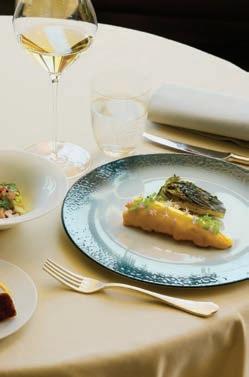
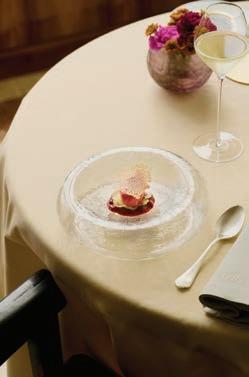
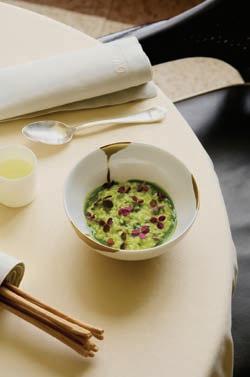
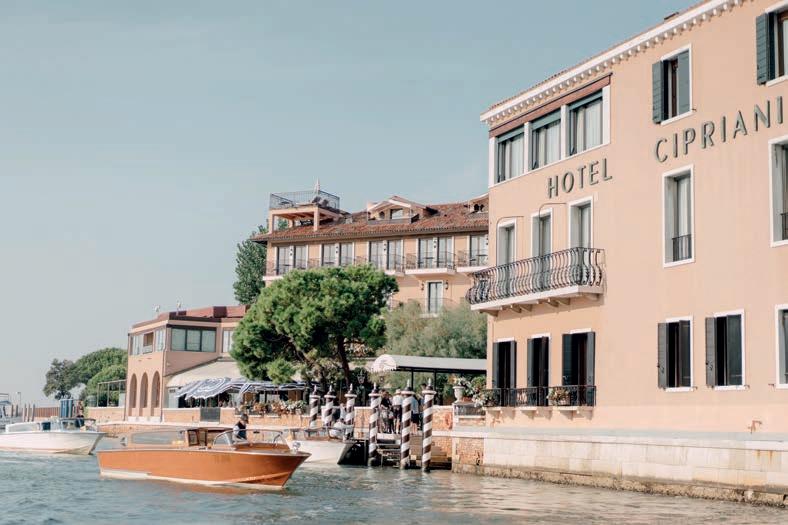
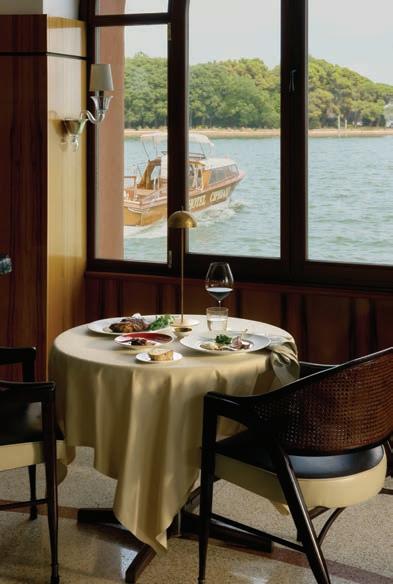
Above: Situated on the stunning Giudecca Island with views over the Venetian lagoon, Hotel Cipriani, A Belmond Hotel is only a short boat journey from St. Mark’s Square. Photo
Left: ORO captures the spirit of Venice, its romance, beauty and connection to the sea. Bordering the edge of the water, the view from your table is a gentle lagoon scene with unmissable vistas ignited by the evening's changing light. Photo SAVOR DUO.
For 2025, her menu evolved with new emotional depth. The “Homage to Carpaccio” offered a bold reinterpretation of the dish invented by Giuseppe Cipriani himself, with a modern take on a Venetian classic. “Paris-Venice Lobster” paid tribute to the legendary Venice Simplon-Orient-Express’ menu. The dessert “Rise and Milk,” infused with Moroccan notes, was inspired by the recent birth of her child, a personal, luminous moment translated into taste. Here, milk became memory: a gentle reflection on new beginnings, mothering, and the intimate act of nourishment.
Her collaboration with Bottura has brought an intellectual spark to the restaurant, though the result is far from cerebral. It’s emotional food, expressive, sensory, and built upon shared curiosity. Bottura’s presence as Culinary Director lends Ghedini the freedom and framework to explore, without ever overshadowing her own vision. The two chefs meet in their pursuit of storytelling through flavour, where art and memory converge.
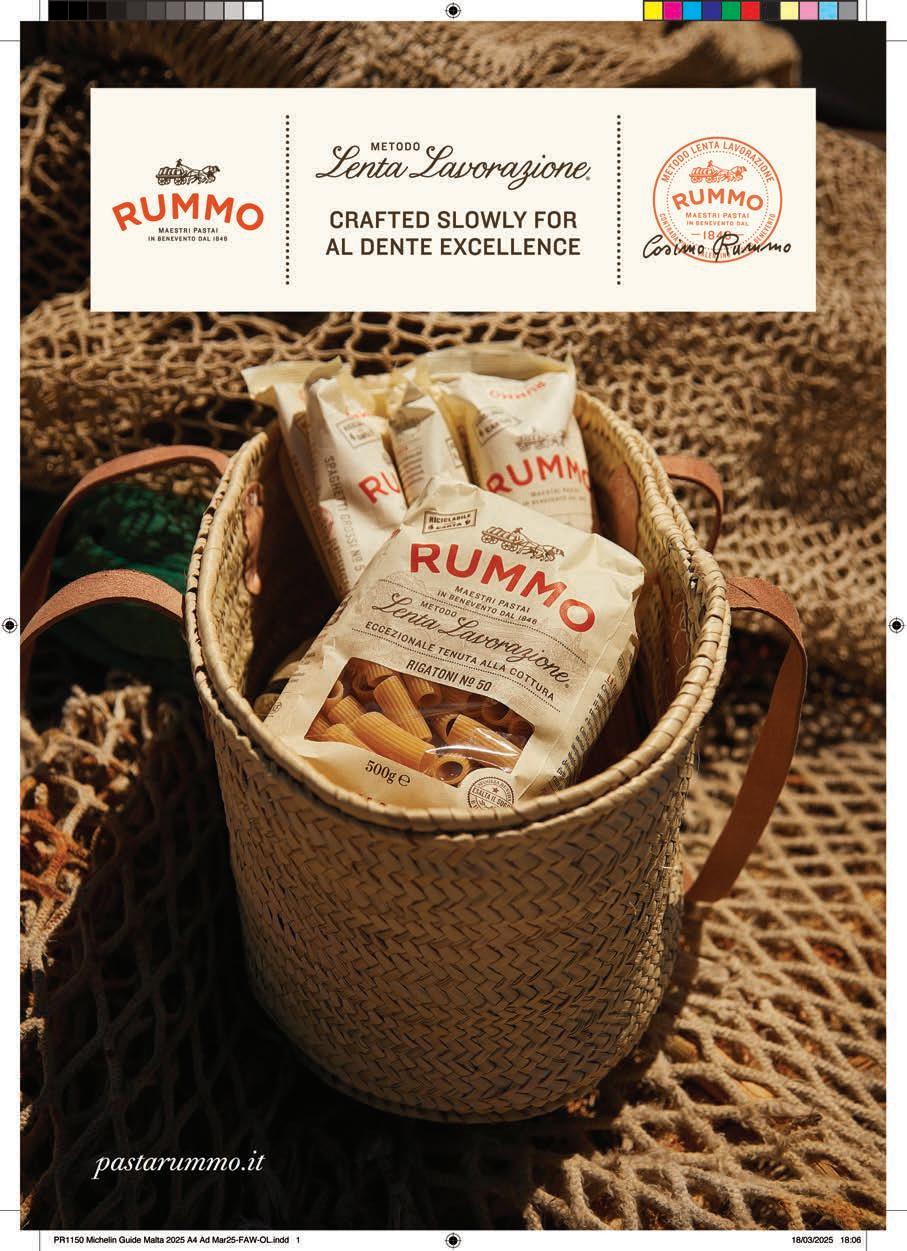

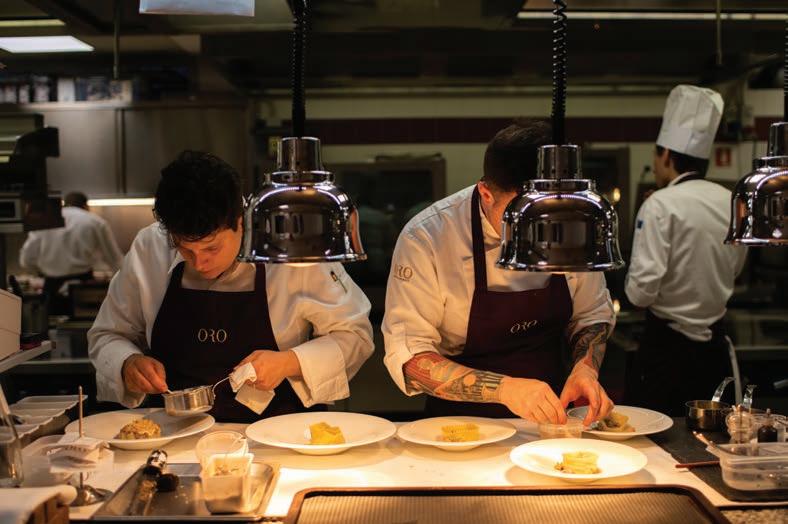
Each season at Oro unfolds like a Venetian tide, its own rhythm, its own palette of changing ingredients. The hotel recently closed its doors for the winter season and won’t re-
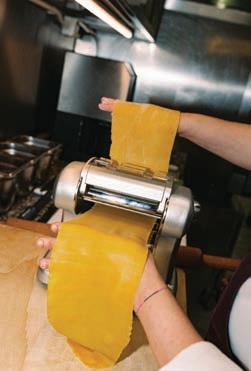

open until next May, giving Ghedini time to pause and create, with the coming months dedicated to exploring new techniques and crafting what she describes as “authentic and distinctive dishes” for the next chapter. This cycle of renewal defines Oro’s essence, growth through refinement.
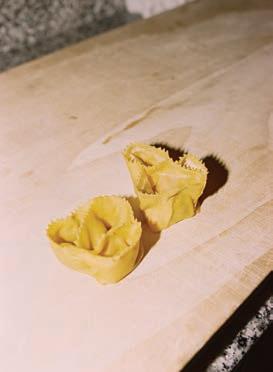

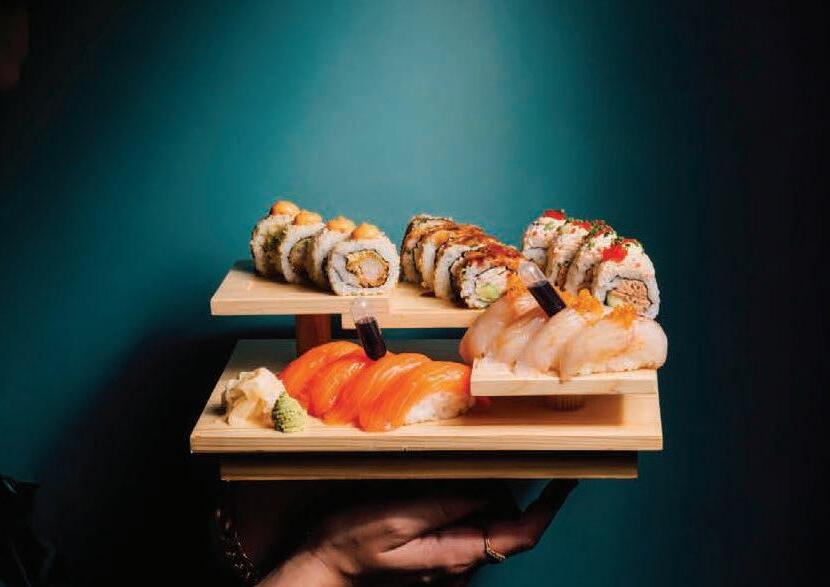


























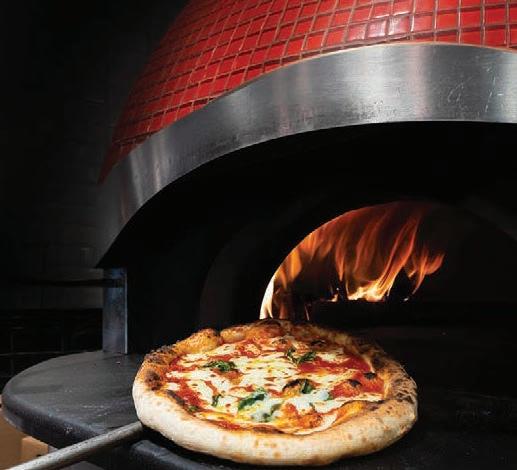
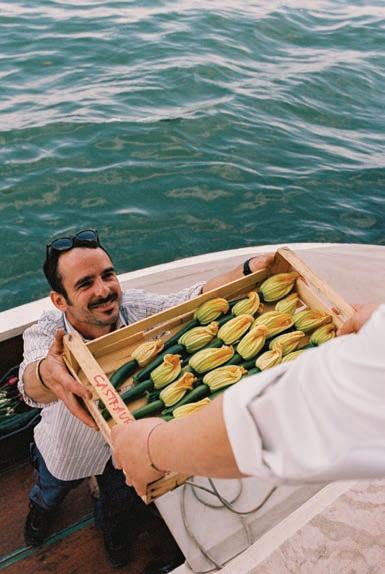
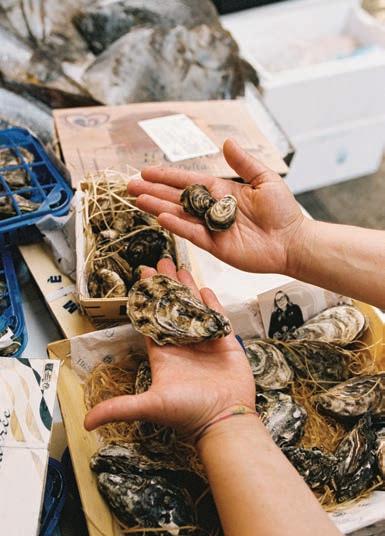
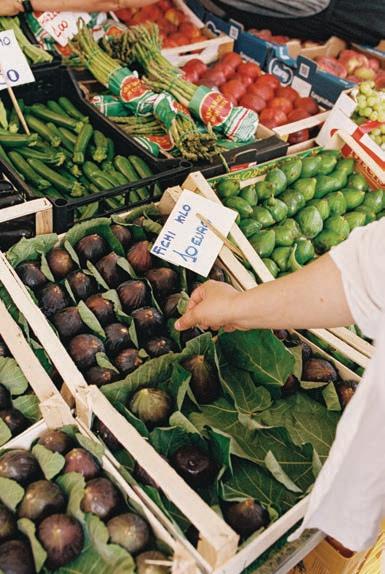
This page: Originally from Ferrara, Chef Ghedini has created a dynamic menu that celebrates the exceptional produce from the Veneto region with nods to her roots in Emilia Romagna and hints of Morocco from her culinary experiences there. Photography Anna Jay.
Hotel Cipriani is distinguished by its lush gardens in the heart of Venice, where white roses, soaring cypresses and pomegranates mingle with aromatic lavenders and rows of vines. This corner of Eden reflects a dedication to seasonality and connection to the land, a daily source of herbs, spices and edible flowers that enrich Chef Vania Ghedini’s creations at Oro. Now, as the golden dining room stands empty for the season, its stillness mirrors the reflective nature of Ghedini’s work. When Oro reopens next May, its menu will undoubtedly evolve once more, carrying forward fragments of past seasons and new inspirations from her winter of research. For Ghedini, the restaurant remains both a laboratory and a love letter, to Venice and to tradition.







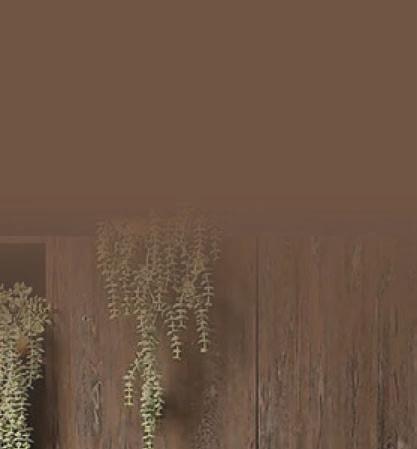





“Every day we live
Anyone proposing to offer a master class on changing the world for the better, without becoming negative, cynical, angry or narrow-minded in the process, could model their advice on the life and work of pioneering animal behavior scholar Jane Goodall, writes Mireya Mayor, Director of Exploration and Science Communication, Florida International University.
Goodall’s life journey stretches from marveling at the somewhat unremarkable creatures, though she would never call them that, in her English backyard as a wide-eyed little girl in the 1930s to challenging the very definition of what it means to be human through her research on chimpanzees in Tanzania. From there, she went on to become a global icon and a United Nations Messenger of Peace.
Until her death on October 1st, 2025 at age 91, Goodall retained a charm, openmindedness, optimism and wide-eyed wonder that are more typical of children. I know this because I have been fortunate to spend time with her and to share insights from my own scientific career. To the public, she was a world-renowned scientist and icon. To me, she was Jane, my inspiring mentor and friend.
Despite the massive changes Goodall wrought in the world of science, upending the study of animal behavior, she was always cheerful, encouraging and inspiring. I think of her as a gentle disrupter. One of her greatest gifts was her ability to make everyone, at any age, feel that they have the power to change the world.
In her pioneering studies in the lush rainforest of Tanzania’s Gombe Stream Game Reserve, now a national park, Goodall noted that the most successful chimp leaders were gentle, caring and familial. Males that tried to rule by asserting their dominance through violence, tyranny and threat did not last.
I also am a primatologist, and Goodall’s groundbreaking observations of chimpanzees at Gombe were part of my preliminary studies. She famously recorded chimps taking long pieces of grass and inserting them into termite nests to “fish” for the insects to eat, something no one else had previously observed.
It was the first time an animal had been seen using a tool, a discovery that altered how scientists differentiated between humanity and the rest of the animal kingdom.
Renowned anthropologist Louis Leakey chose Goodall to do this work precisely
because she was not formally trained. When she turned up in Leakey’s office in Tanzania in 1957, at age 23, Leakey initially hired her as his secretary, but he soon spotted her potential and encouraged her to study chimpanzees. Leakey wanted someone with a completely open mind, something he believed most scientists lost over the course of their formal training.
Because chimps are humans’ closest living relatives, Leakey hoped that understanding the animals would provide insights into early humans. In a predominantly male field, he also thought a woman would be more patient and insightful than a male observer. He wasn’t wrong.
Six months in, when Goodall wrote up her observations of chimps using tools, Leakey wrote, “Now we must redefine tool, redefine Man, or accept chimpanzees as human.”
Goodall spoke of animals as having emotions and cultures, and in the case of chimps, communities that were almost tribal. She also named the chimps she observed, an unheard-of practice at the time, garnering ridicule from scientists who had traditionally numbered their research subjects.
One of her most remarkable observations became known as the Gombe Chimp War. It was a four-year-long conflict in which eight adult males from one community killed all six males of another community, taking over their territory, only to lose it to another, bigger community with even more males.
Goodall was persuasive, powerful and determined, and she often advised me not to succumb to people’s criticisms. Her path to groundbreaking discoveries did not involve stepping on people or elbowing competitors aside.
Rather, her journey to Africa was motivated by her wonder, her love of animals and a powerful imagination. As a little girl, she was entranced by Edgar Rice Burroughs’ 1912 story “Tarzan of the Apes,” and she loved to joke that Tarzan married the wrong Jane.
When I was a 23-year-old former NFL cheerleader, with no scientific background at
that time, and looked at Goodall’s work, I imagined that I, too, could be like her. In large part because of her, I became a primatologist, co-discovered a new species of lemur in Madagascar and have had an amazing life and career, in science and on TV, as a National Geographic explorer. When it came time to write my own story, I asked Goodall to contribute the introduction. She wrote: “Mireya Mayor reminds me a little of myself. Like me she loved being with animals when she was a child. And like me she followed her dream until it became a reality.”
Goodall was an incredible storyteller and saw it as the most successful way to help people understand the true nature of animals. With compelling imagery, she shared extraordinary stories about the intelligence of animals, from apes and dolphins to rats and birds, and, of course, the octopus. She inspired me to become a wildlife correspondent for National Geographic so that I could share the stories and plights of endangered animals around the world.
Goodall inspired and advised world leaders, celebrities, scientists and conservationists. She also touched the lives of millions of children. Through the Jane Goodall Institute, which works to engage people around the world in conservation, she launched Roots & Shoots, a global youth program that operates in more than 60 countries. The program teaches children about connections between people, animals and the environment, and ways to engage locally to help all three.
Along with Goodall’s warmth, friendship and wonderful stories, I treasure this comment from her: “The greatest danger to our future is our apathy. Each one of us must take responsibility for our own lives, and above all, show respect and love for living things around us, especially each other.”
It’s a radical notion from a one-of-a-kind scientist.
This article first appeared on The Conversation and is republished from The Conversation under a Creative Commons license.
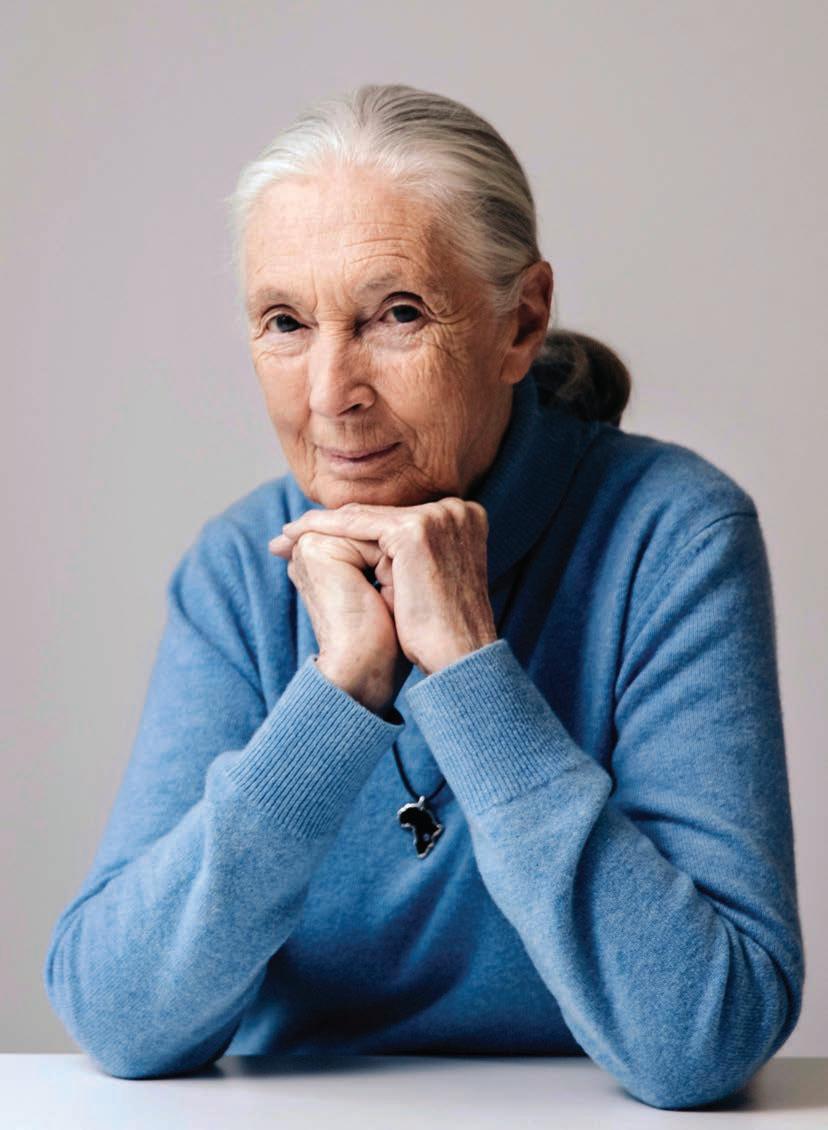
“I
St Emilion is famous for its limestone plateau wines lush in a serene austerity and elegance (think Ausone, Angelus and Pavie). Yet the five Figeac hills bordering Pomerol produce the world’s best expression of Cabernet Franc grown on Gunzian gravel and iron rich clays. Cheval Blanc (itself built on land once owned by Figeac) and Figeac are both situated here; and in Figeac’s case, three hills are planted in Cab Sauvignon on the higher altitude, Cab Franc on the mid slopes, and Merlot on the clay soils. Uniquely Figeac is an equal blend of all three varieties with the wealth of terroir giving an edge to the final cuvee, writes Kris Bonavita. Photography Sean Gabriel Ellul.

Figeac 2016 is a lesson in harmony, balanced sophistication, tight-rope taut tension, and poised drip by drip seductive power. You get the familiarly flamboyant soft wooded blue flowers, cedar and cigar wrap, but the chiffon pleated almost rococo fruit and mineral flavours and scents are seamlessly a testament to the wine’s prowess. Everything works in unison for a long luscious musical note of a wine with a large list of descriptors. Luminous, wide, pure, high peaked, and yet nothing out of order, just one simple symphony of bon ton grace. The opening stunning salvo is death by a thousand ethereal violets and peonies, with a puckered-lip attack of mint and camphor tinkling sensation full of zeal to enamour you right through the finish; and all along cherry, molasses, anise, clove, espresso and chocolate paint a silvery palate depth.
Testament to the winemaker Frederic Faye who thought it was his best vintage, this is an ingenuously perfect blend with a soft evolution into what may turn out to be a legend. The signature star struck feel of 2016 known for its linearity, purity and lush balance are on full display. This is a goldilocks vintage that beatifies all three main grape varieties, making the triumvirate use in Figeac 16 a strong contender for wine of the vintage. If you have any of this, open to see what a 100-score wine should taste like but vault and lock the rest and hide the key.
St Emilion the hills of a thousand estates can be segmented into the limestone plateau, gravel hills and slopes; and deeper soiled clay foothills and sandy terraces. Chateaux often own plots in different settings allowing them to blend chiefly merlot and cab franc for added complexity. Limestone contributes to a wine’s backbone and savoury saline streak; clay a mineralised fruity mid palate and depth; gravel adds a secondary floral and wooded structured dimension; while sandy soils offer a lighter graceful refinement. Cab Franc has an affinity to gravel slopes and together with Cab Sauv being often the last to ripen in the region provides a fresh and fragrant backbone to complement the softer mid palate ripeness of Merlot. FIGEAC is available at Farsonsdirect, online and in store.
